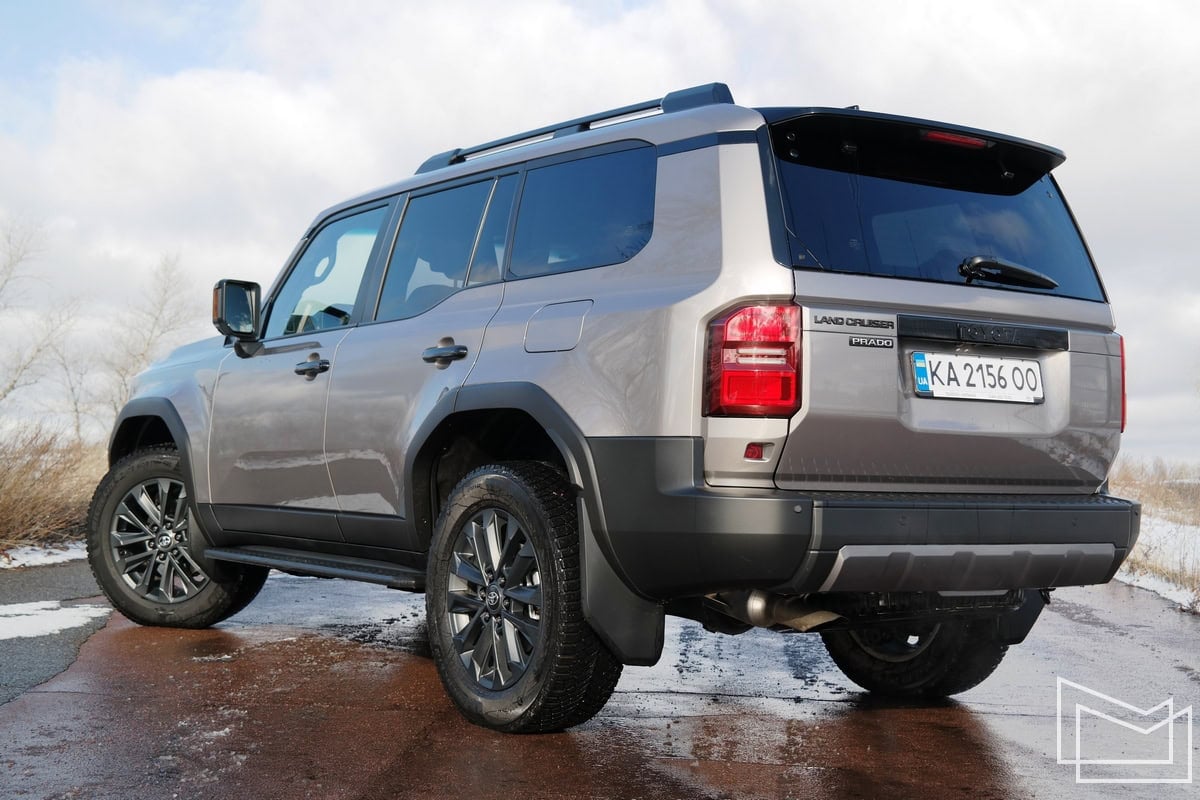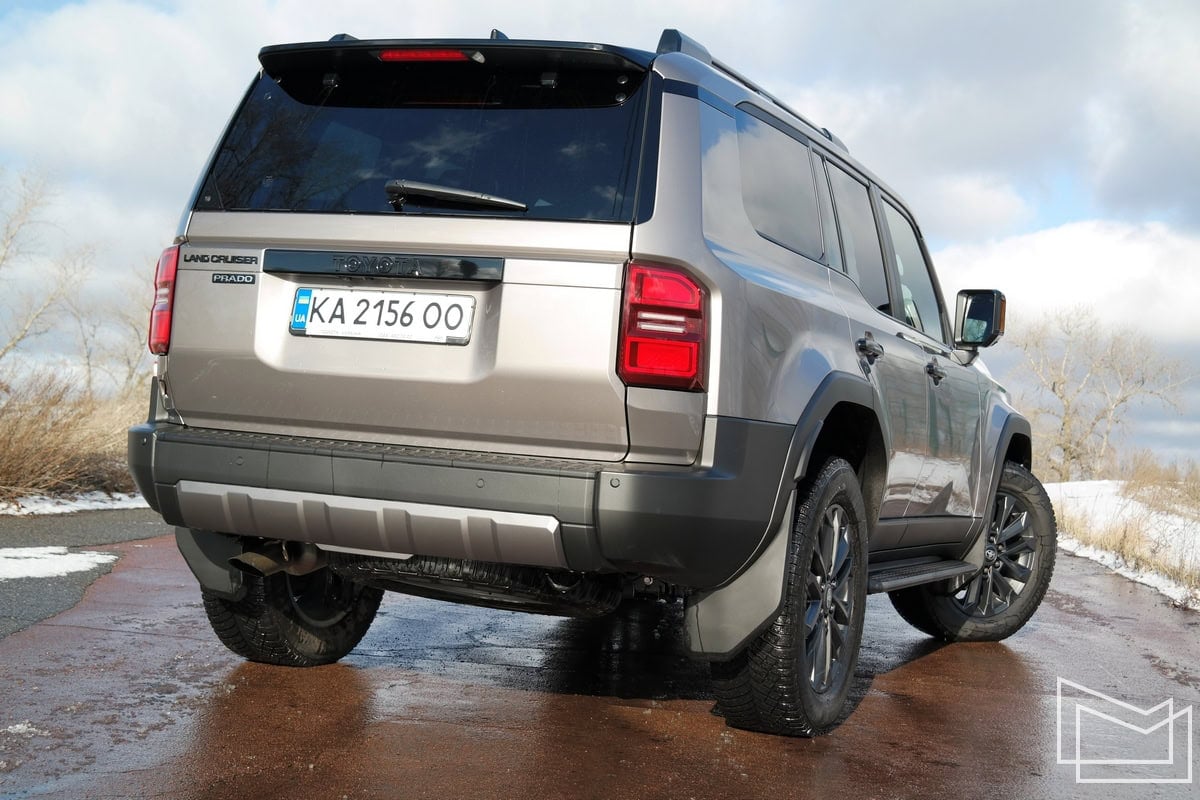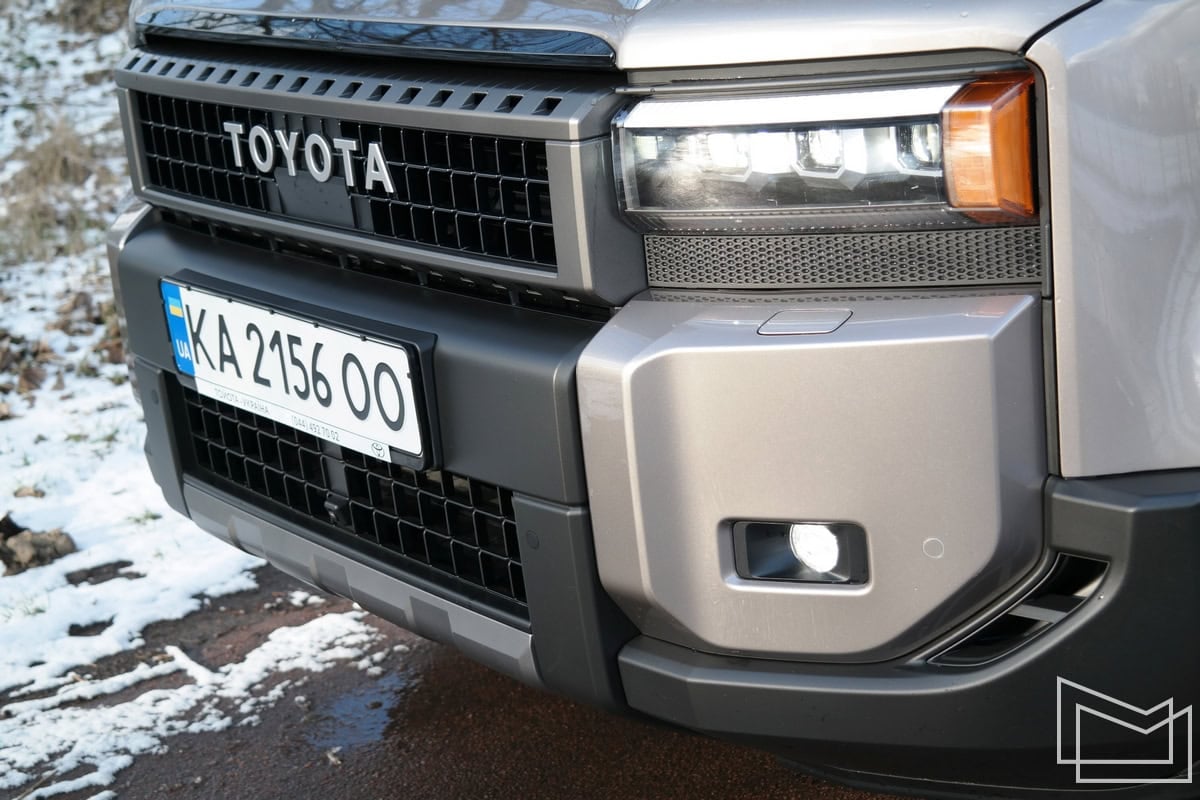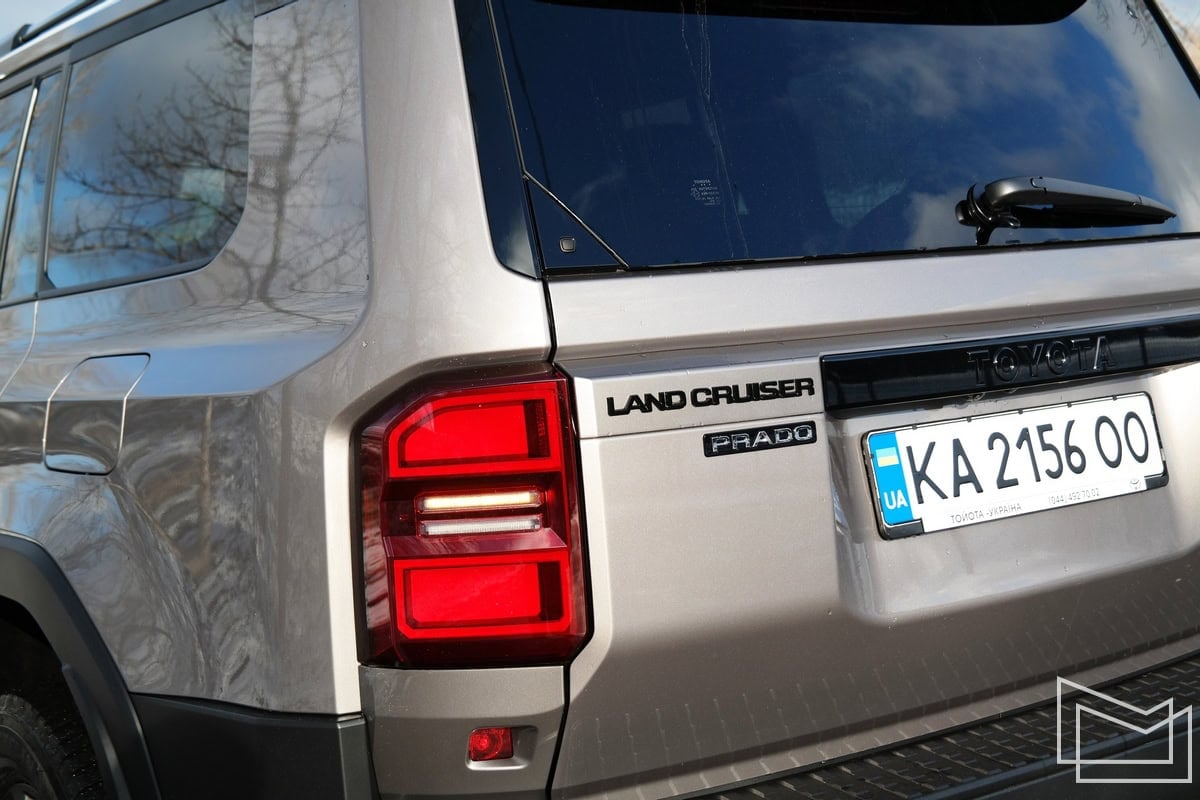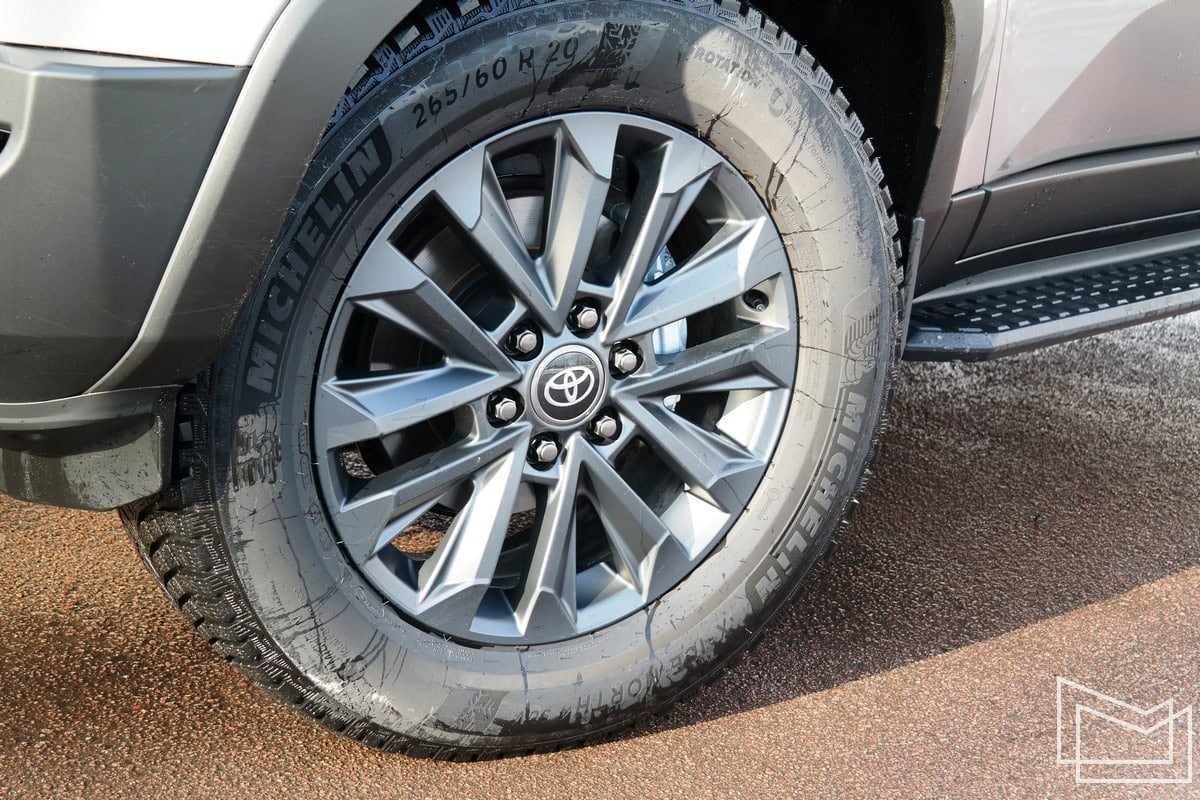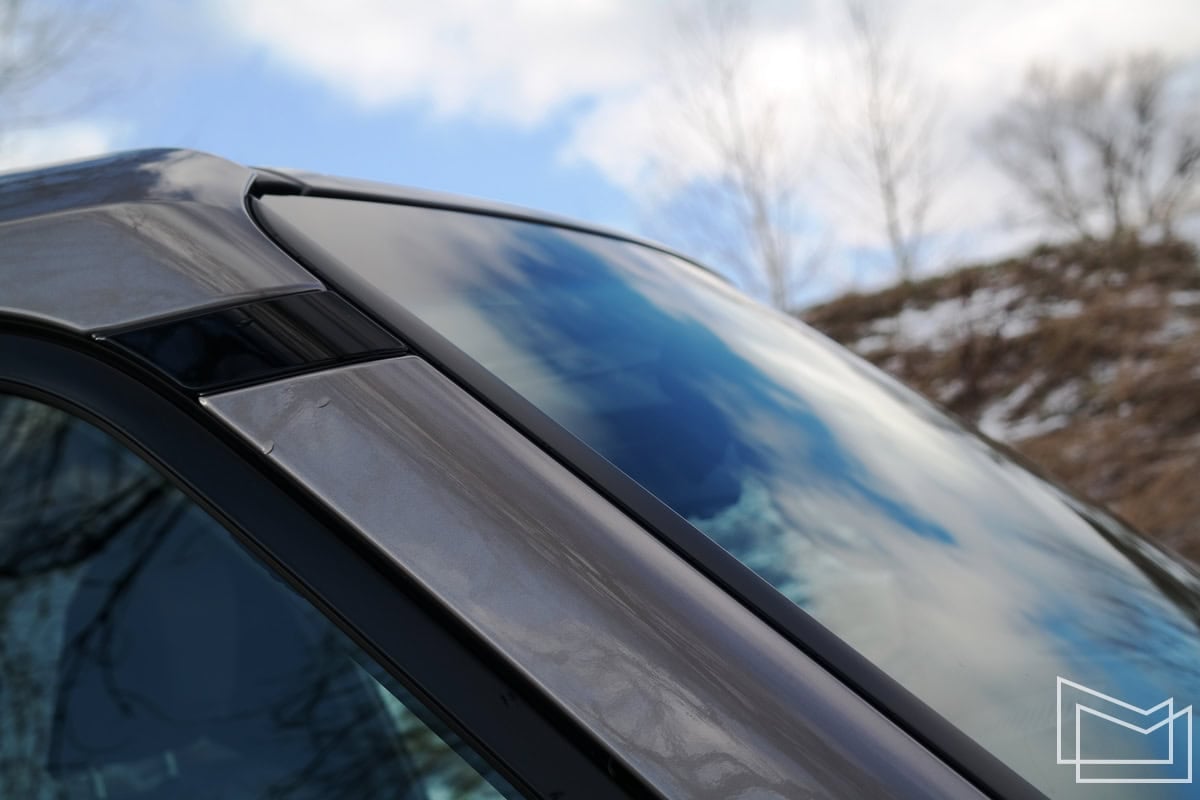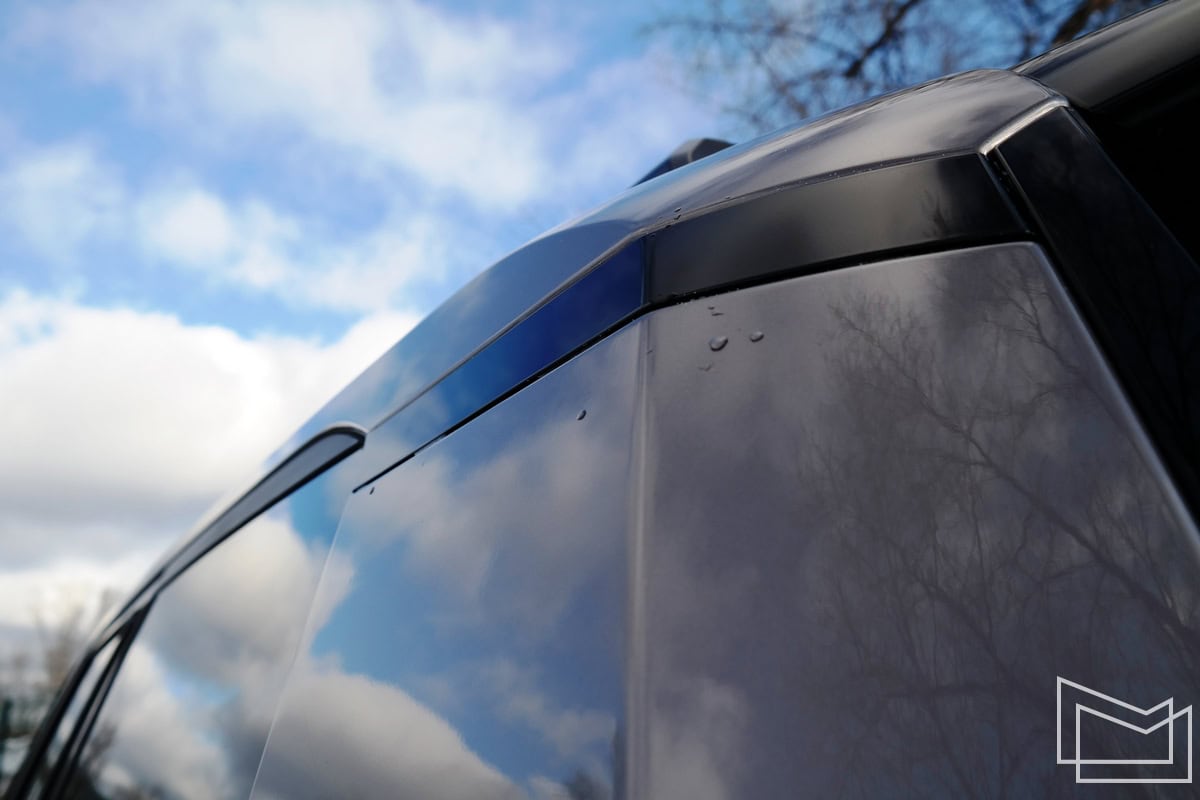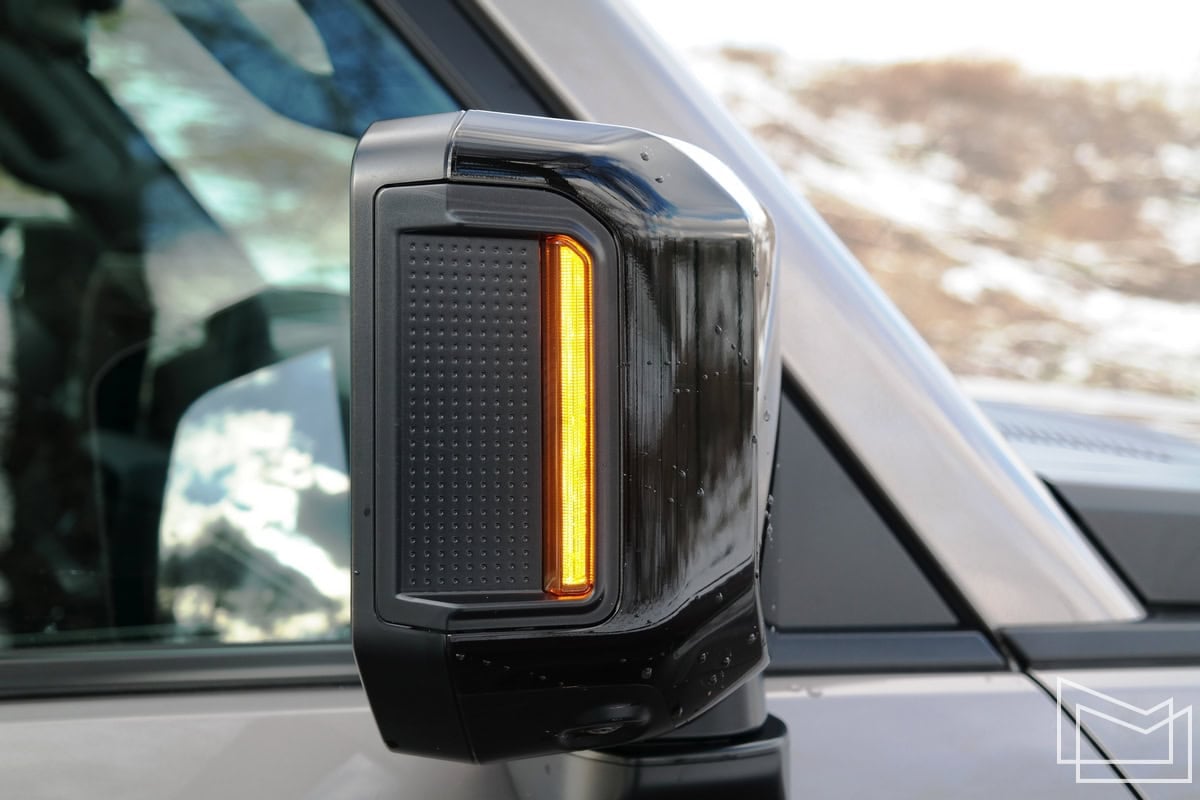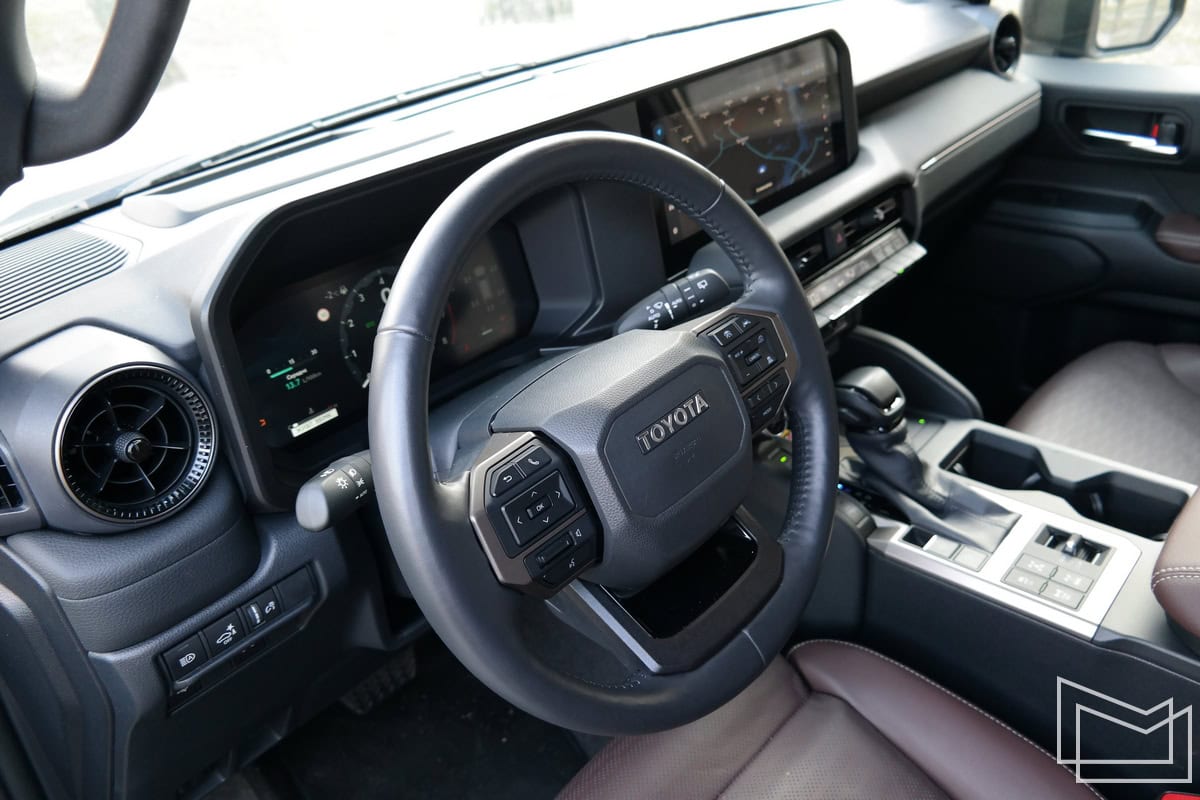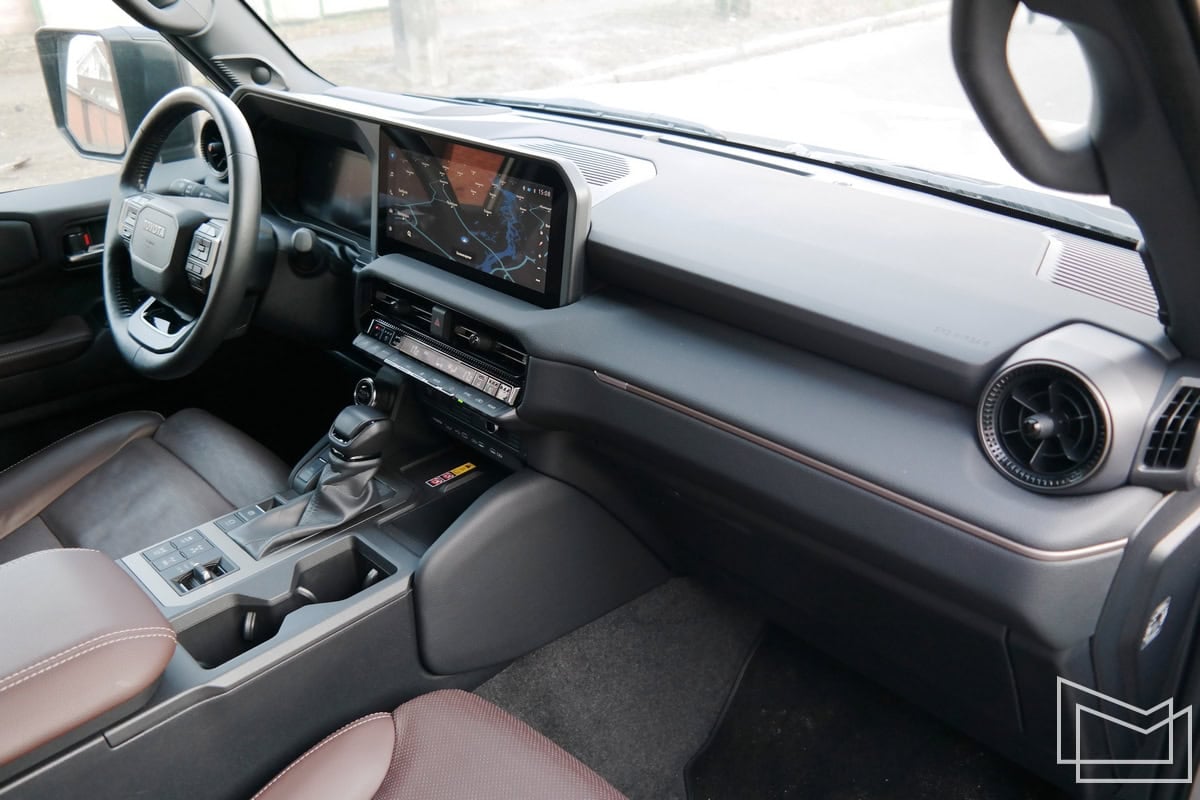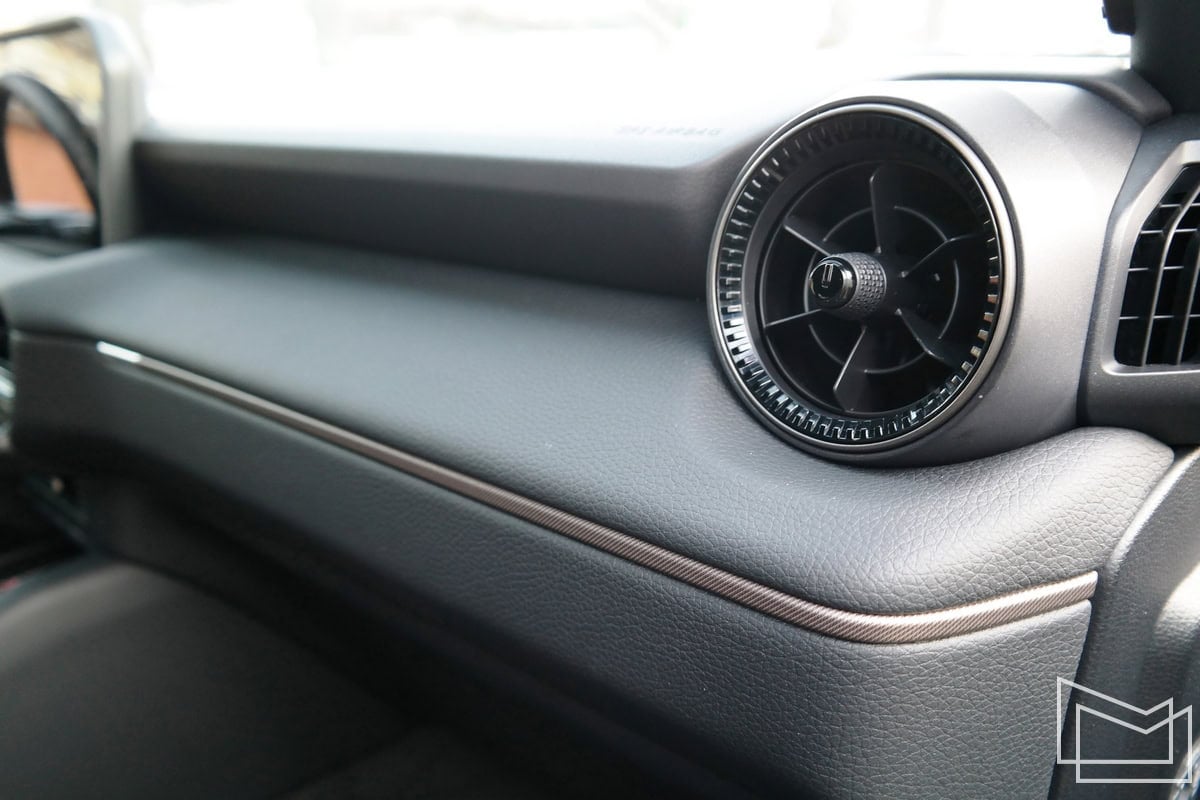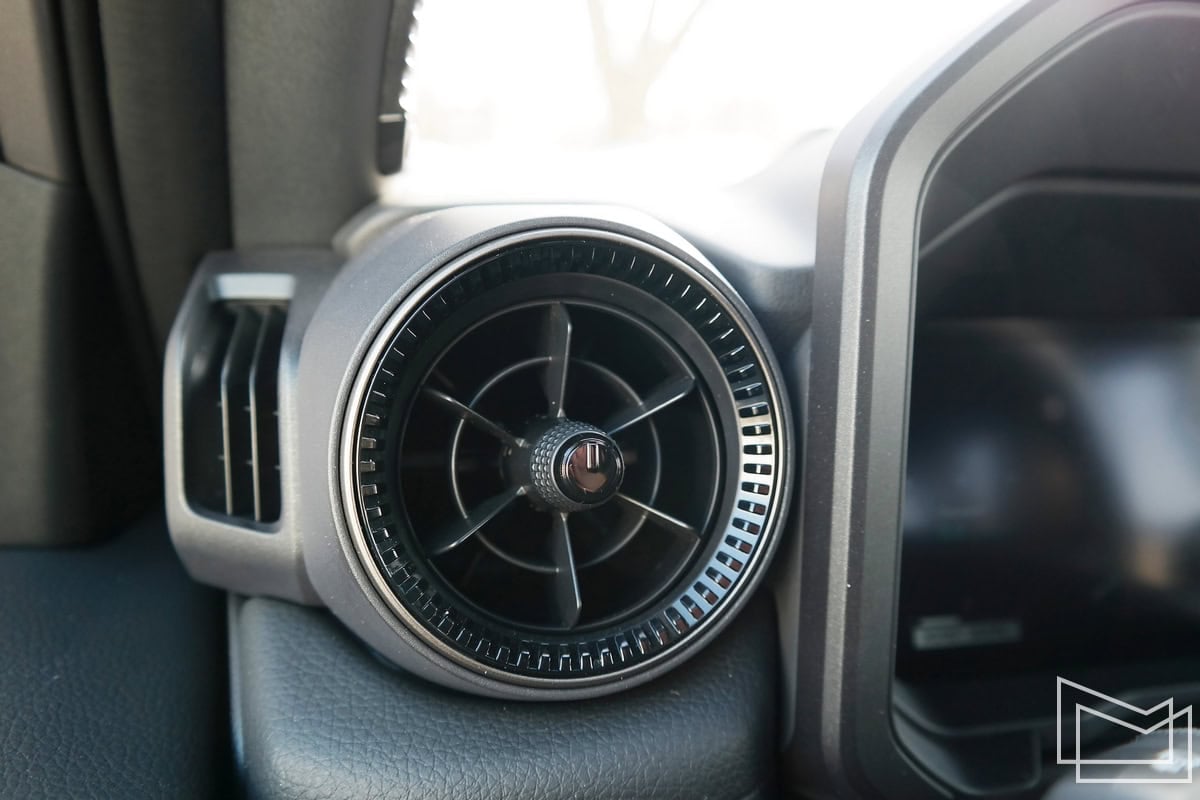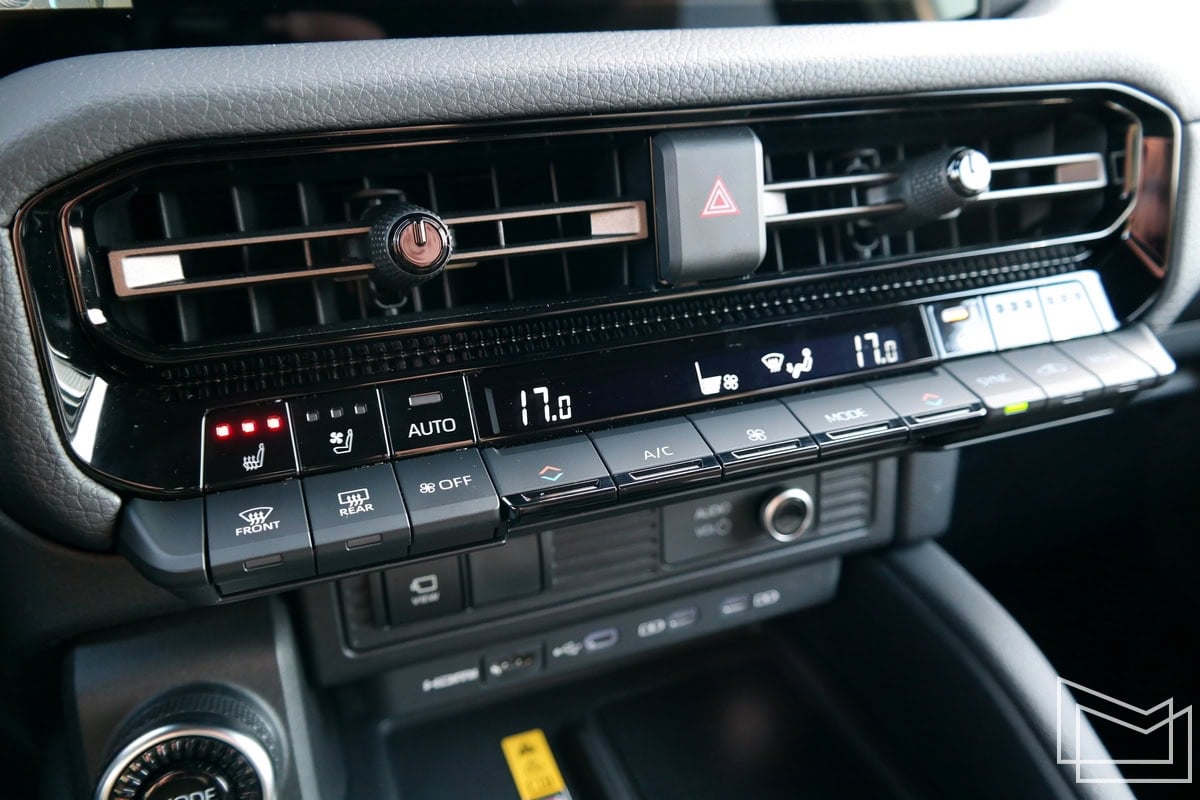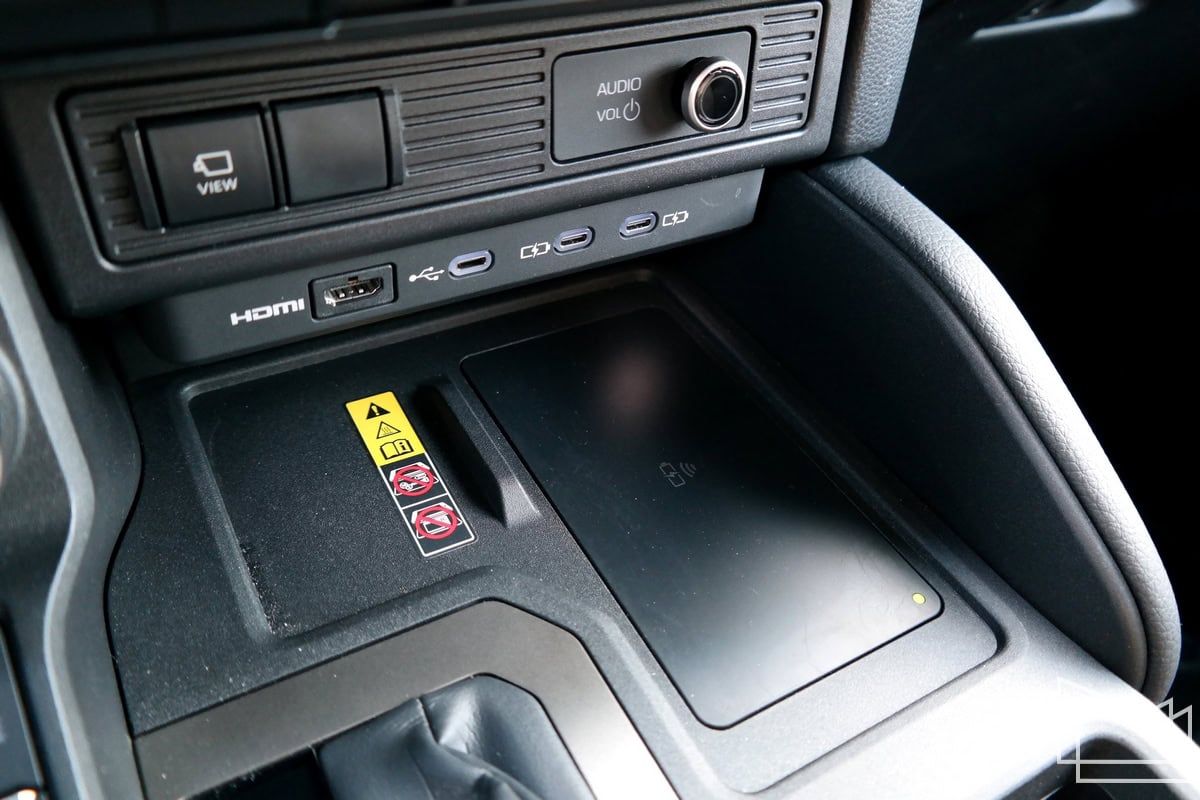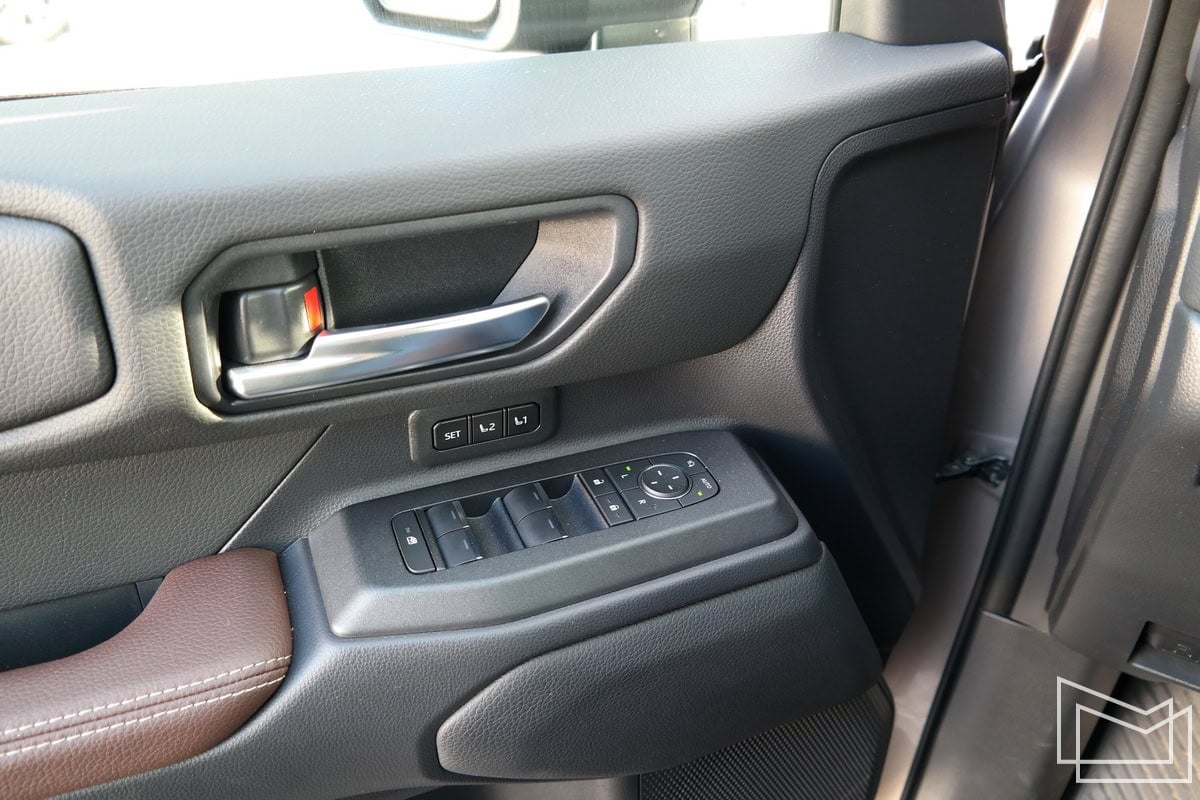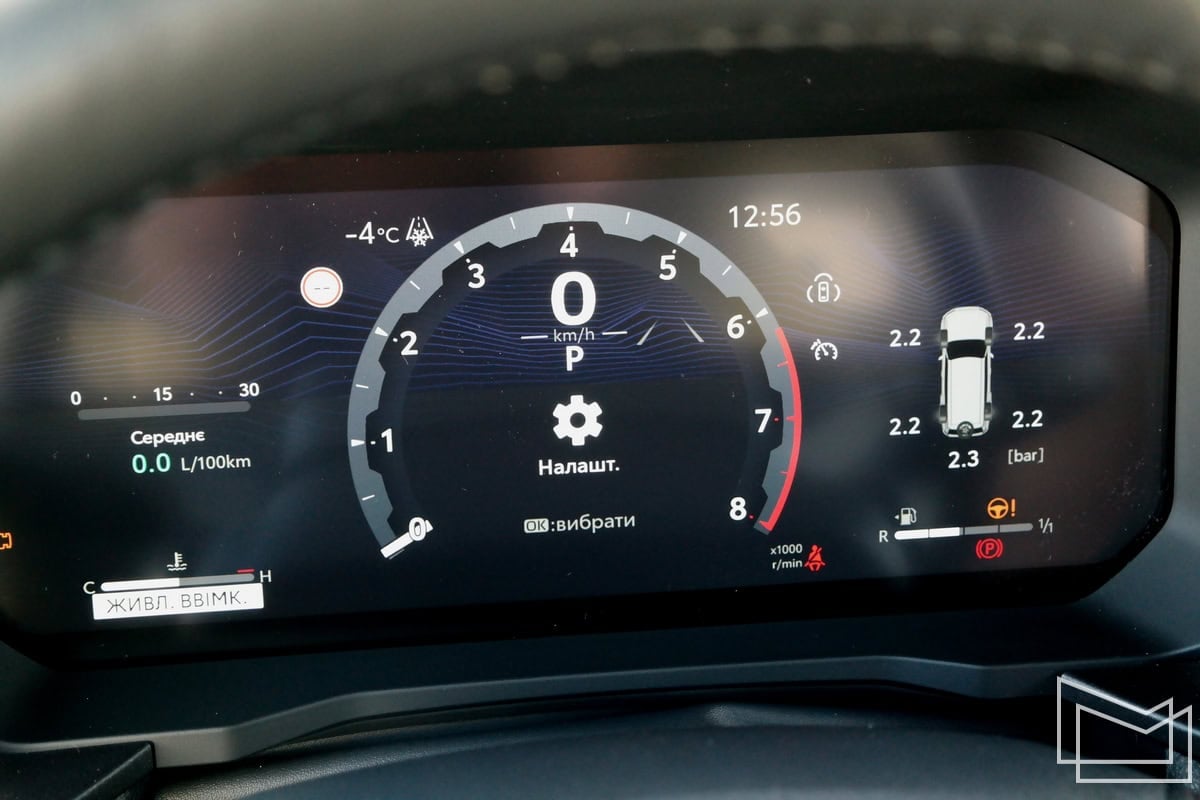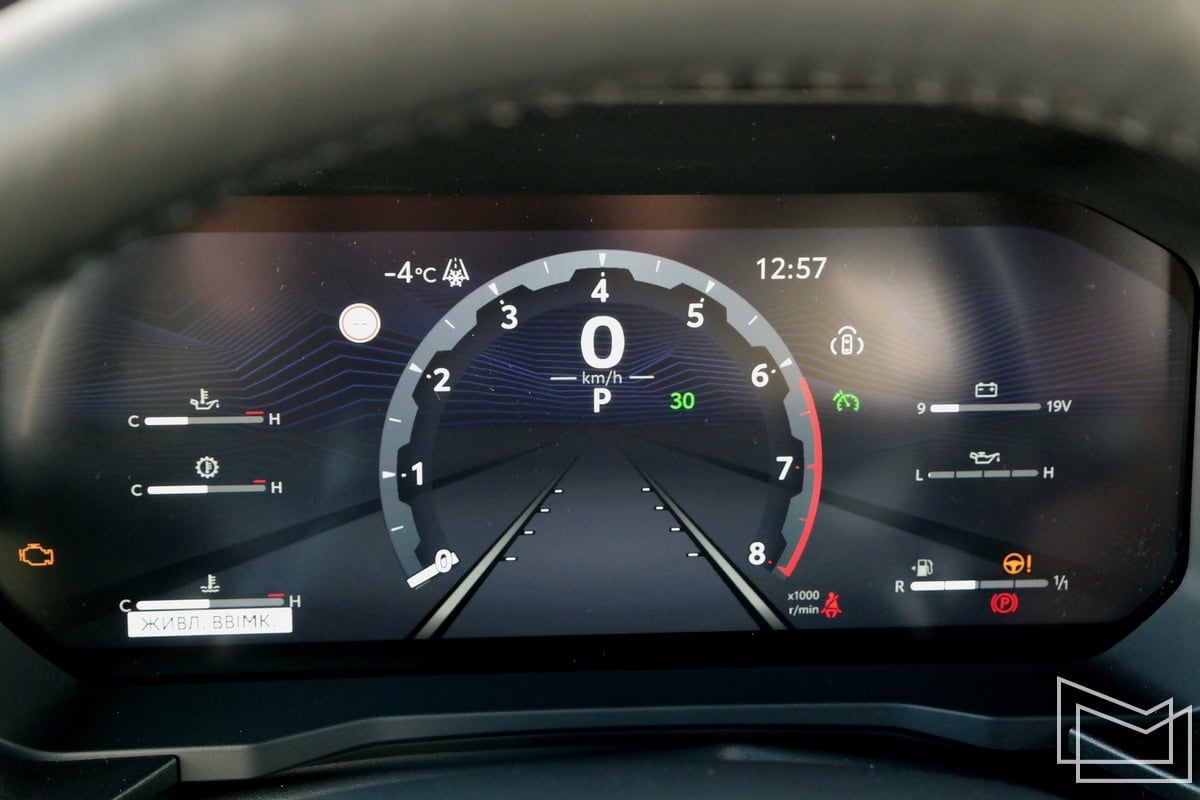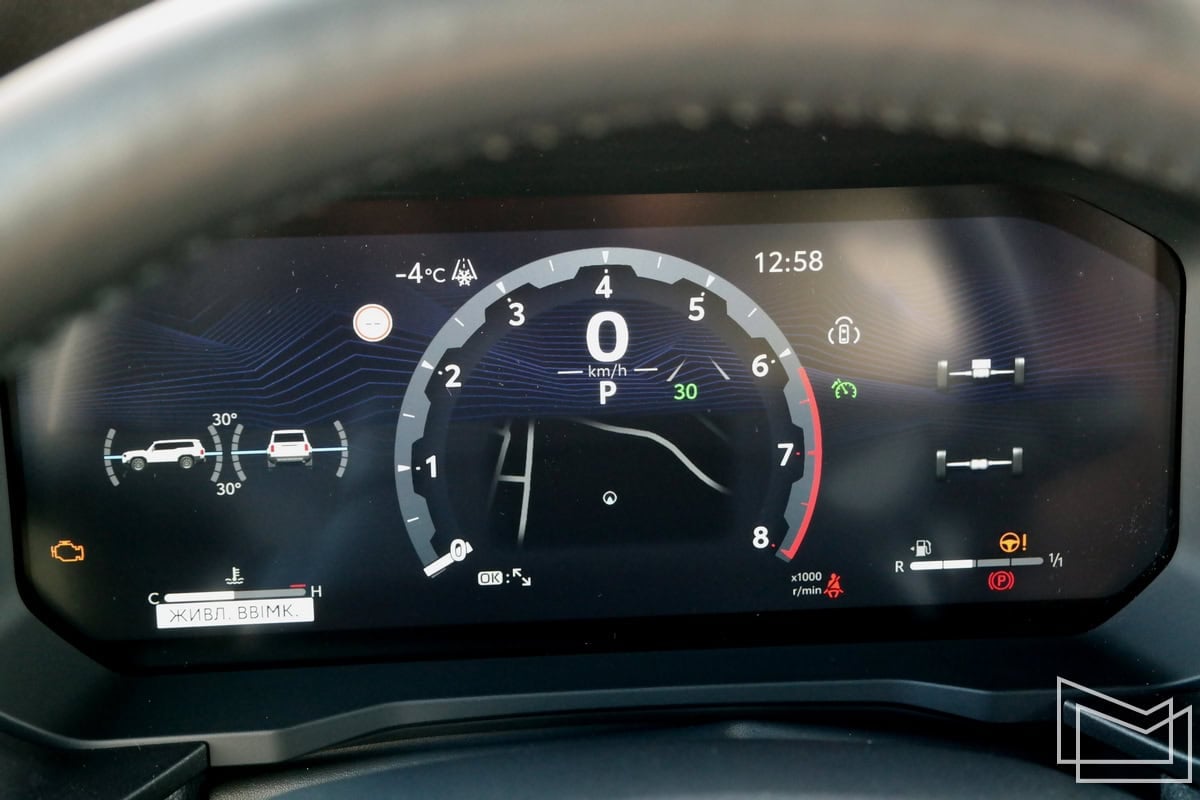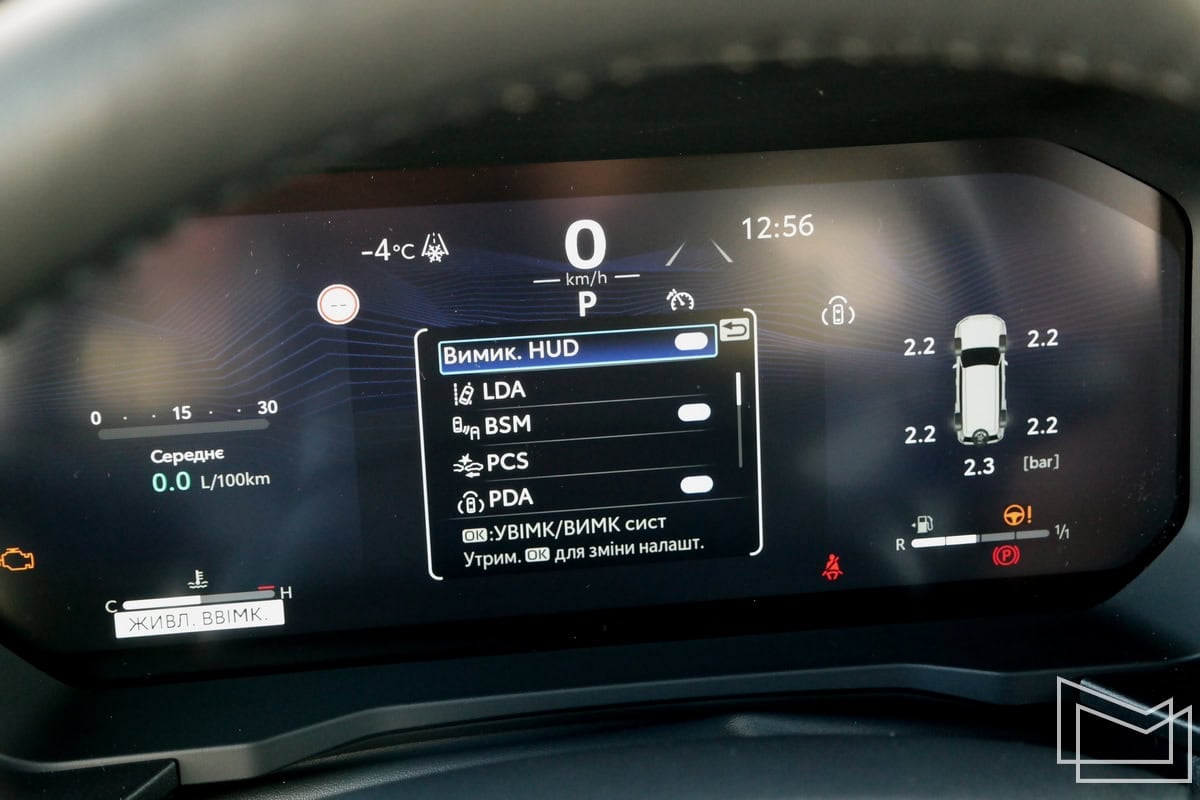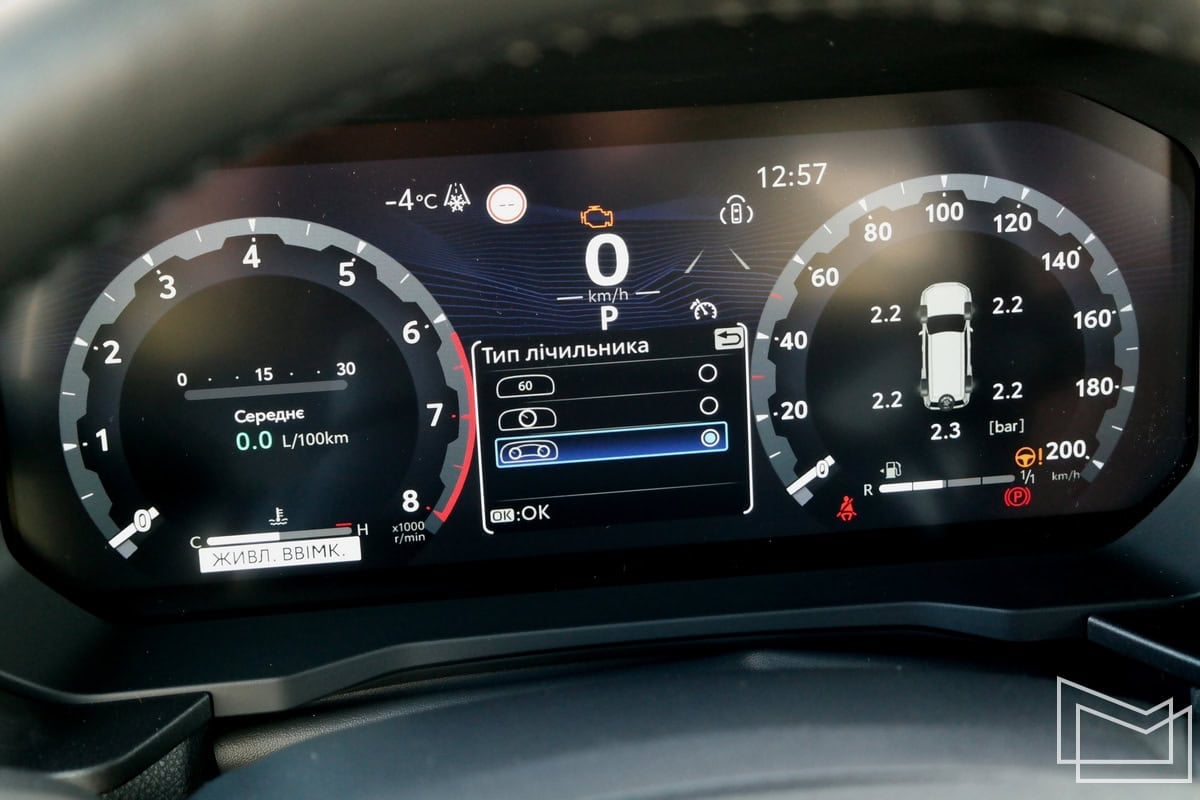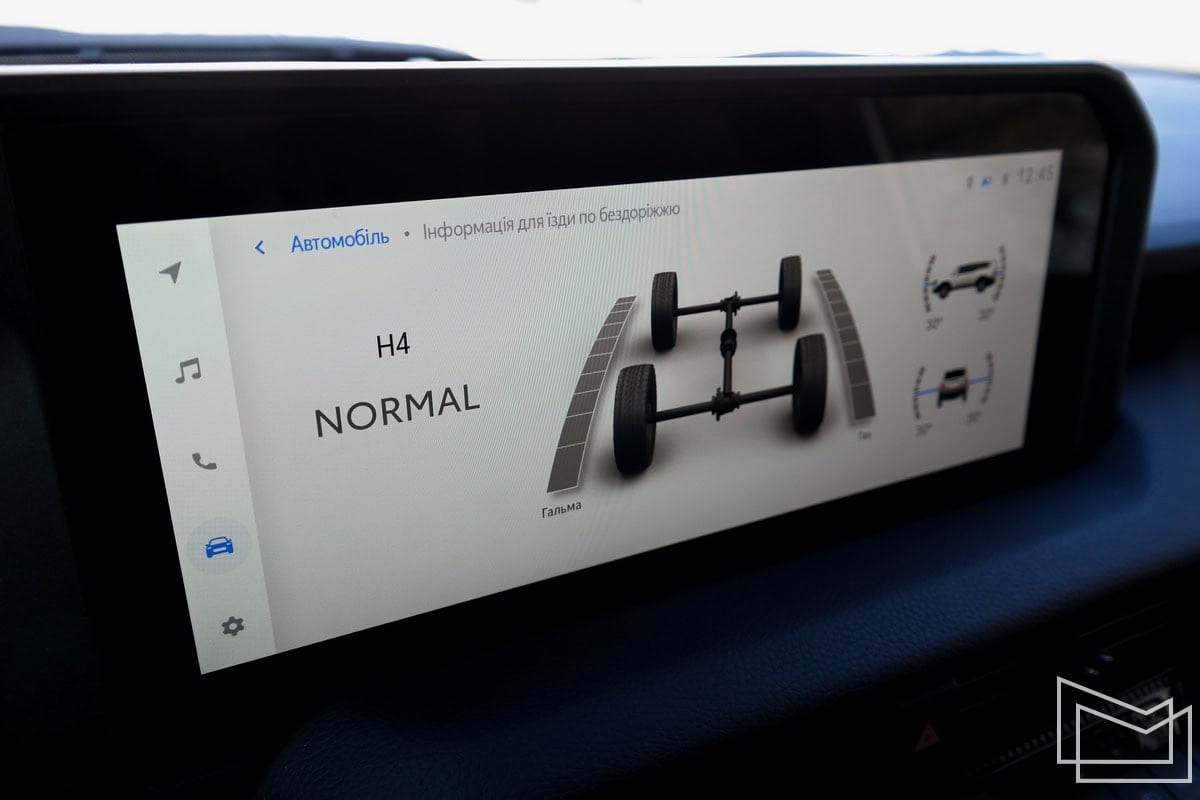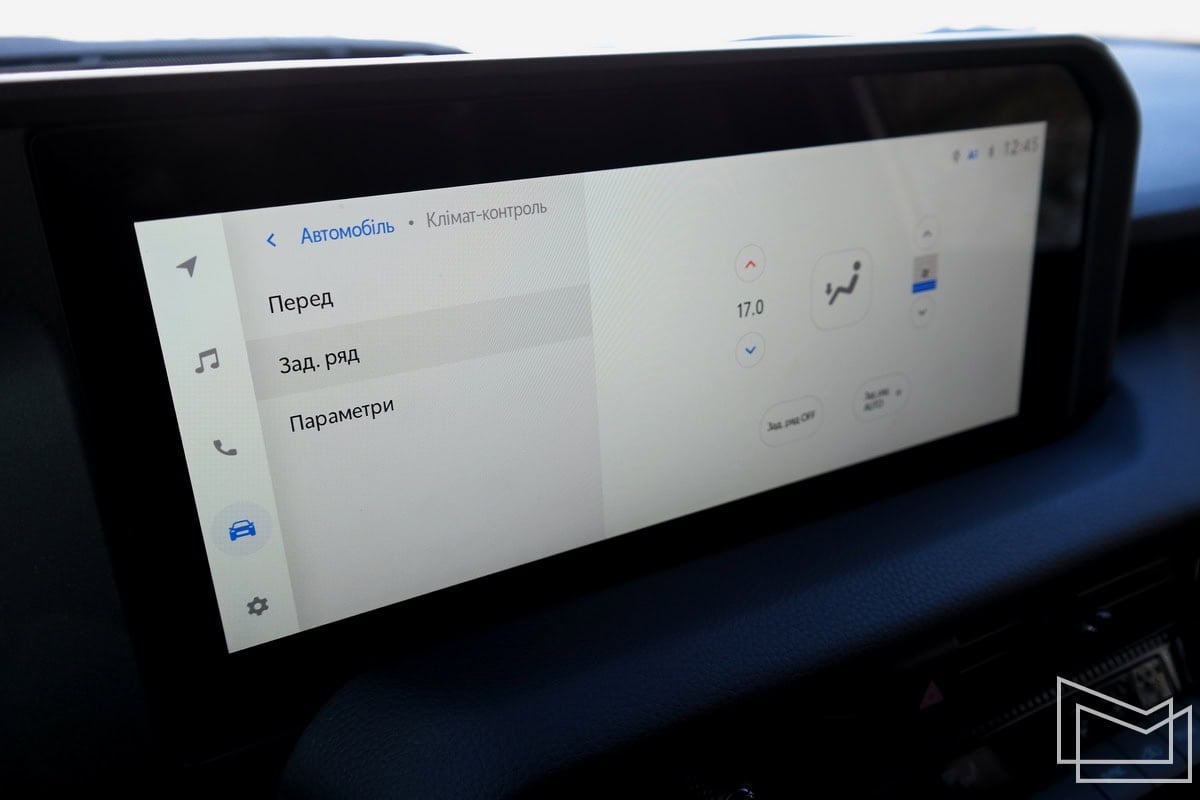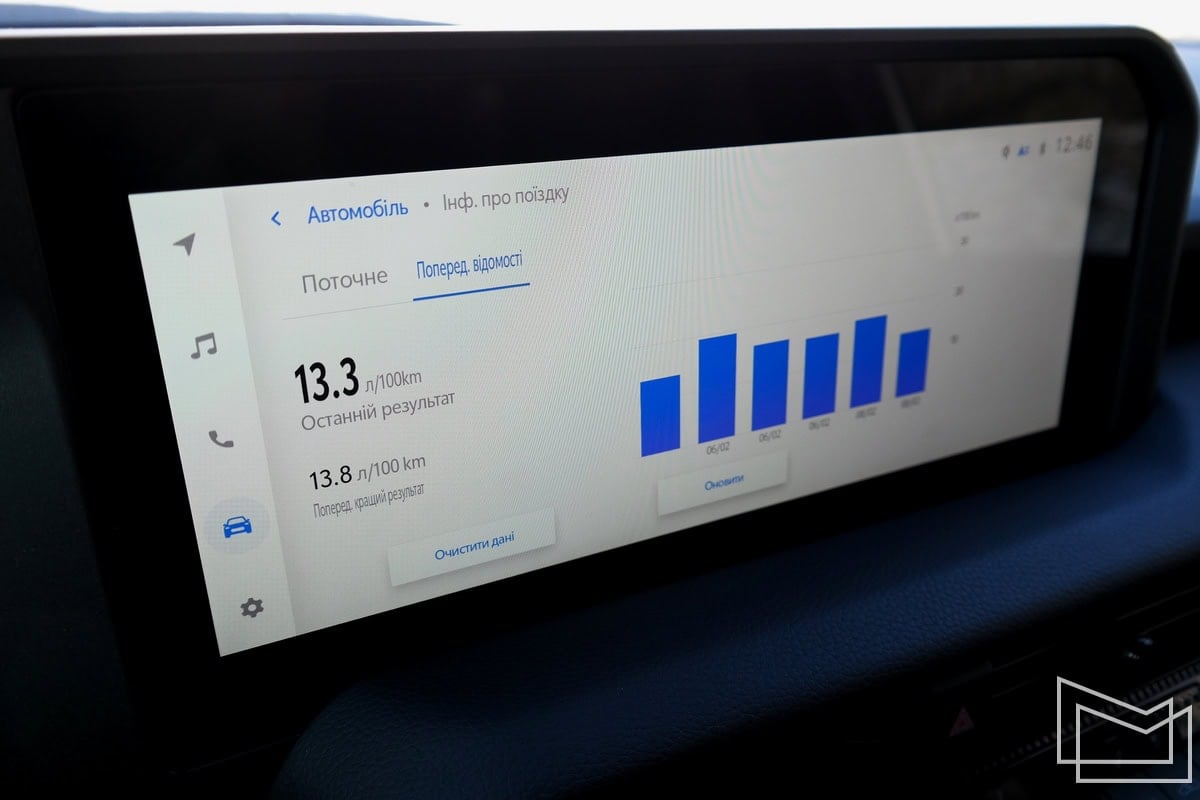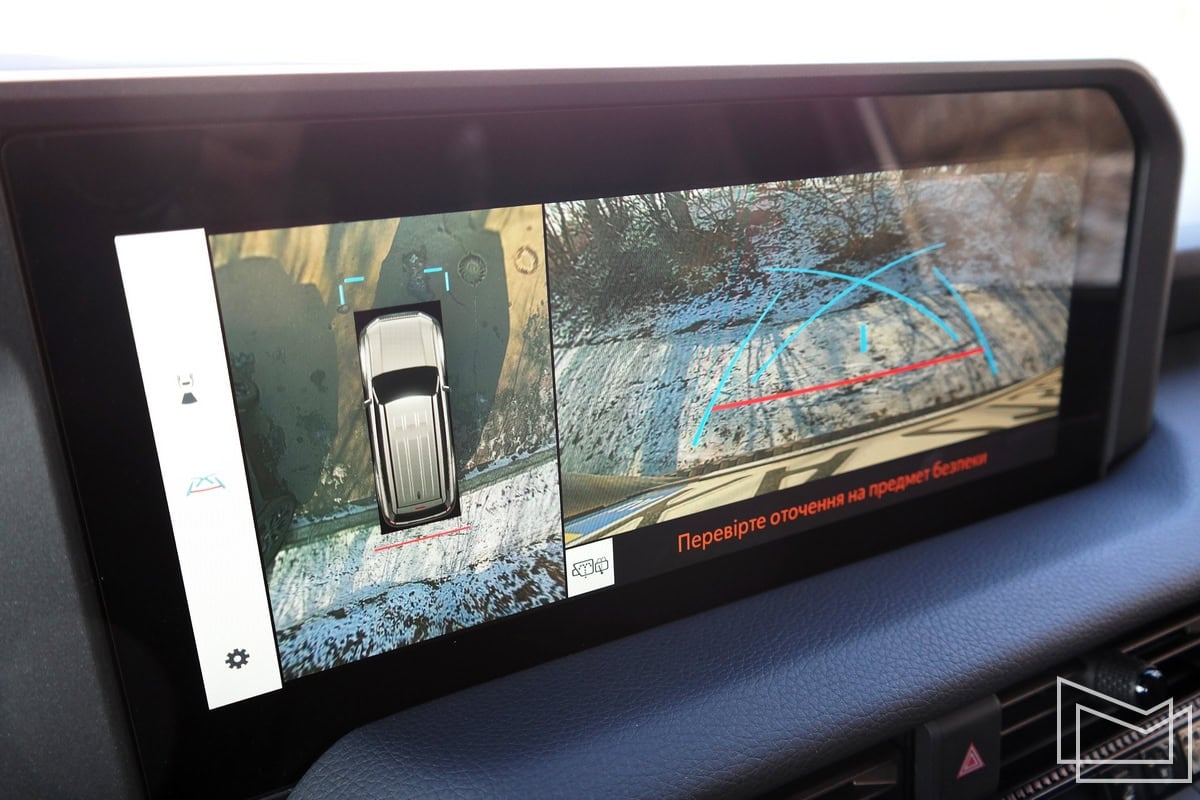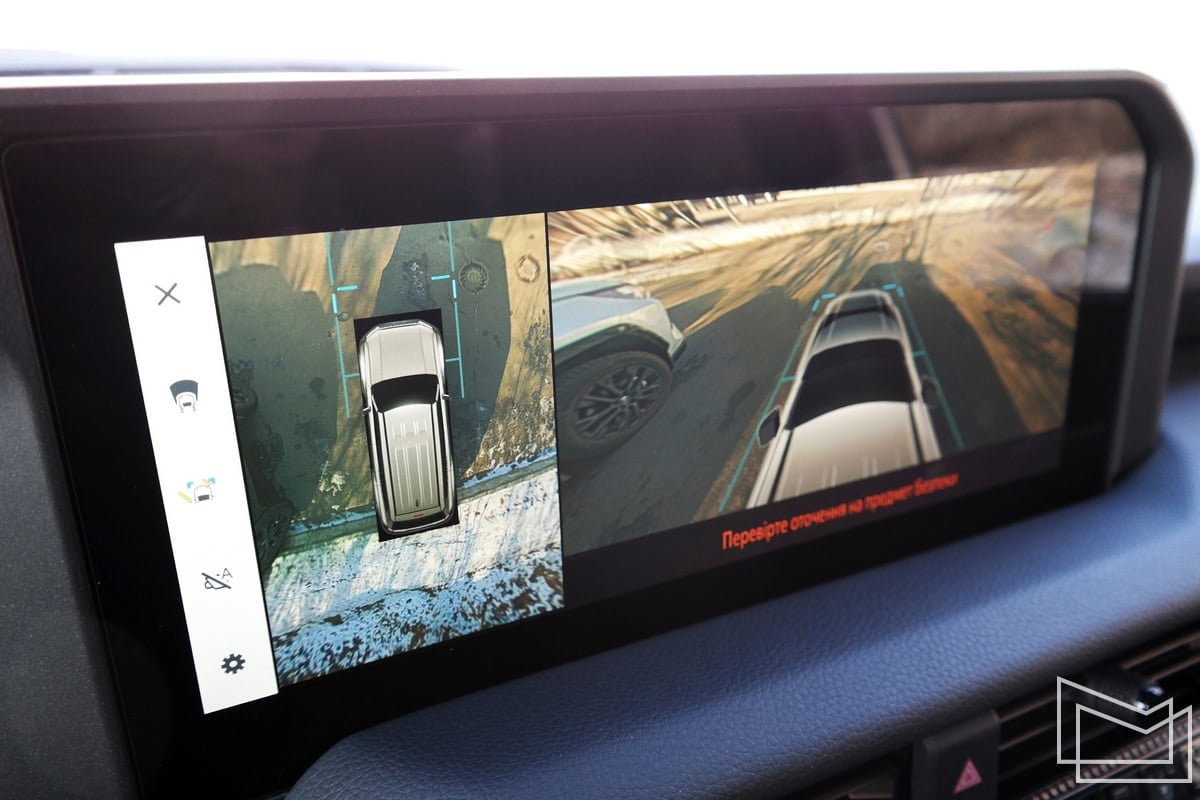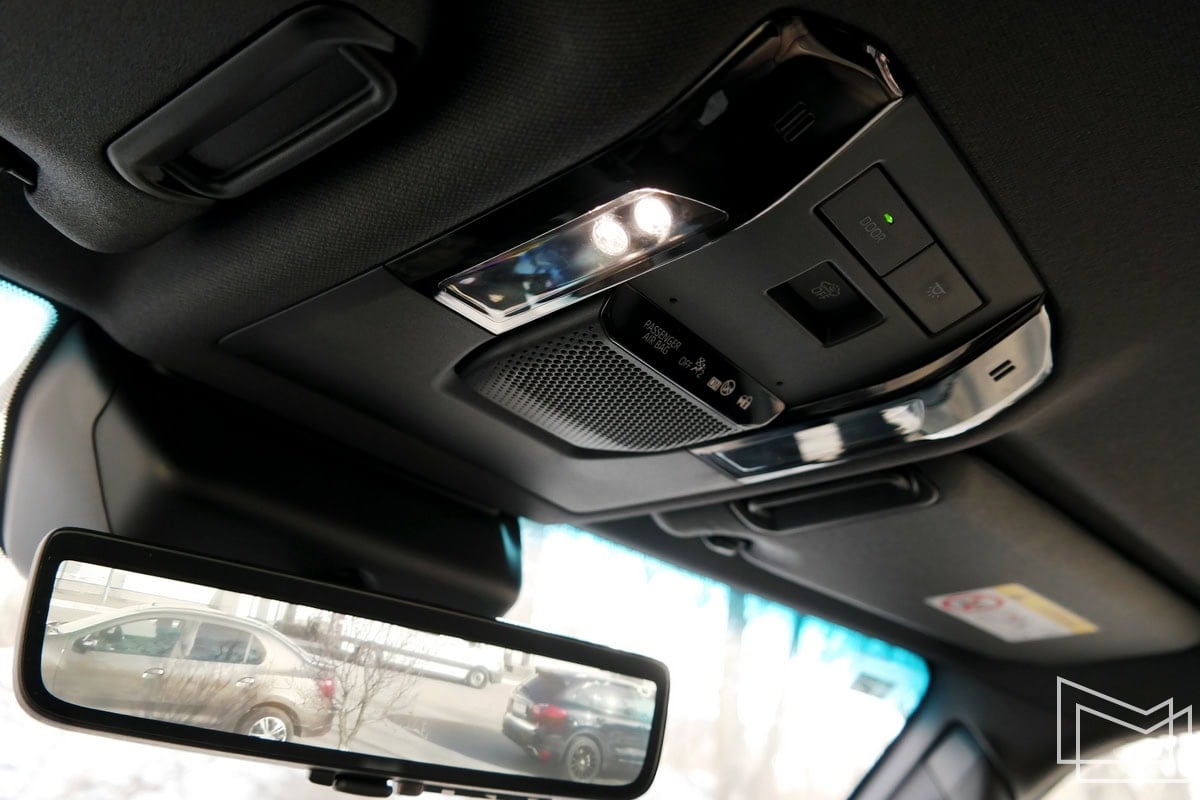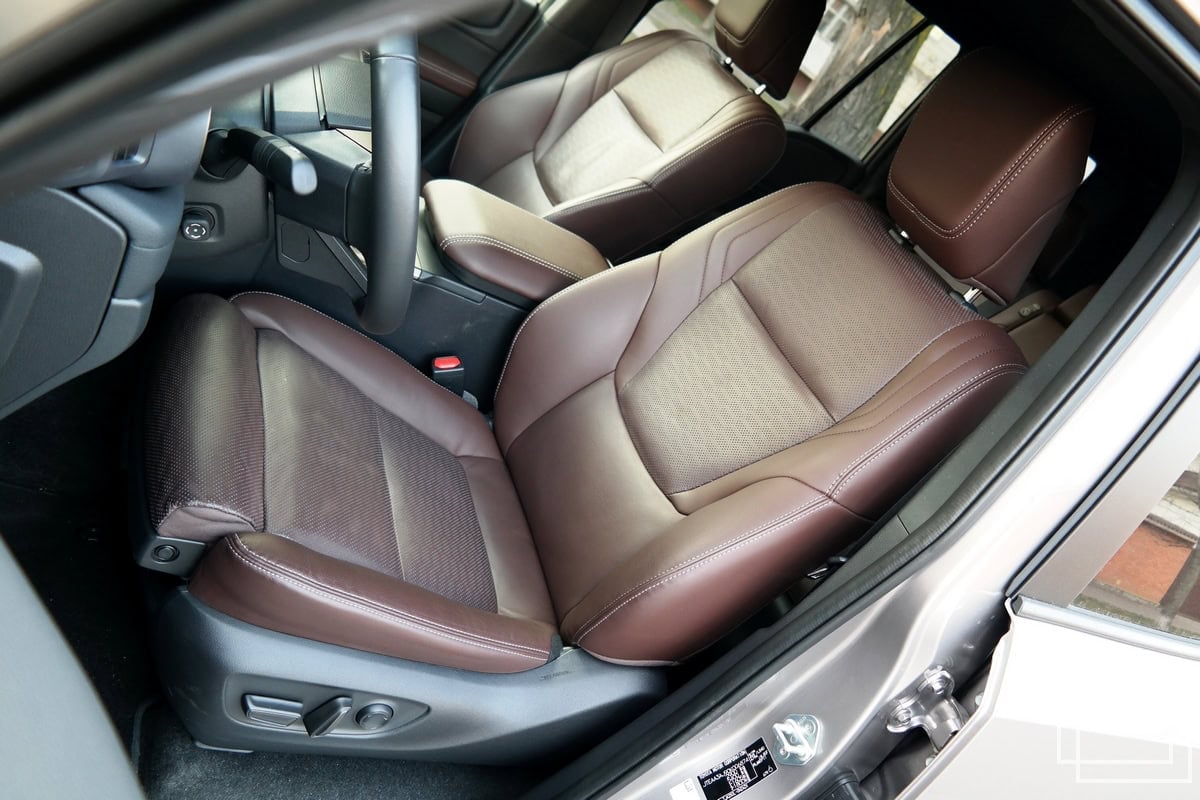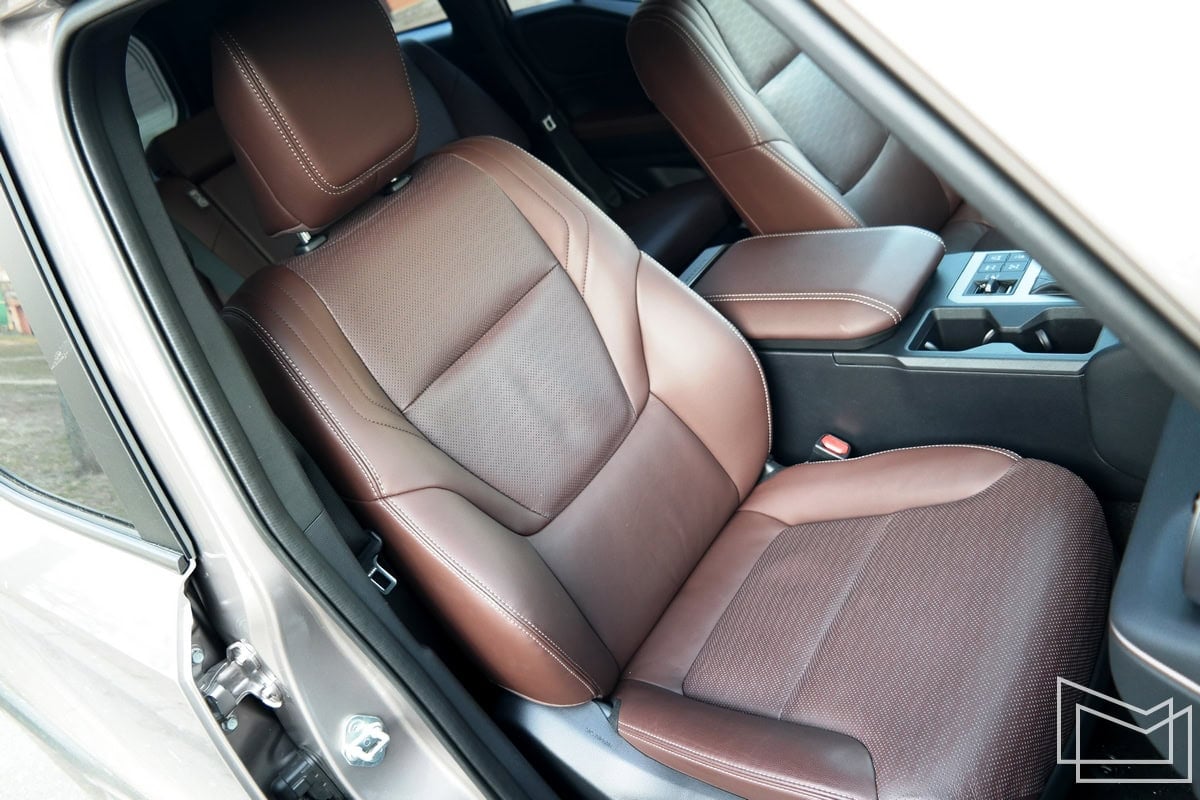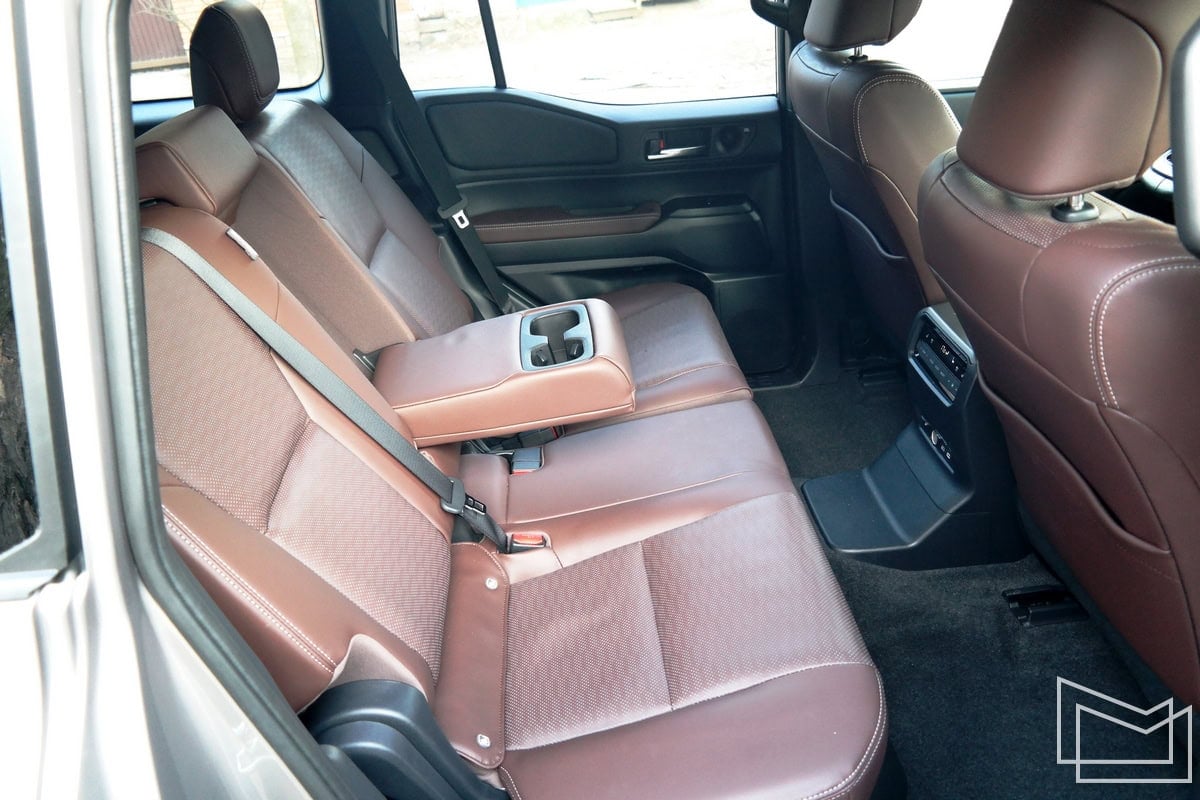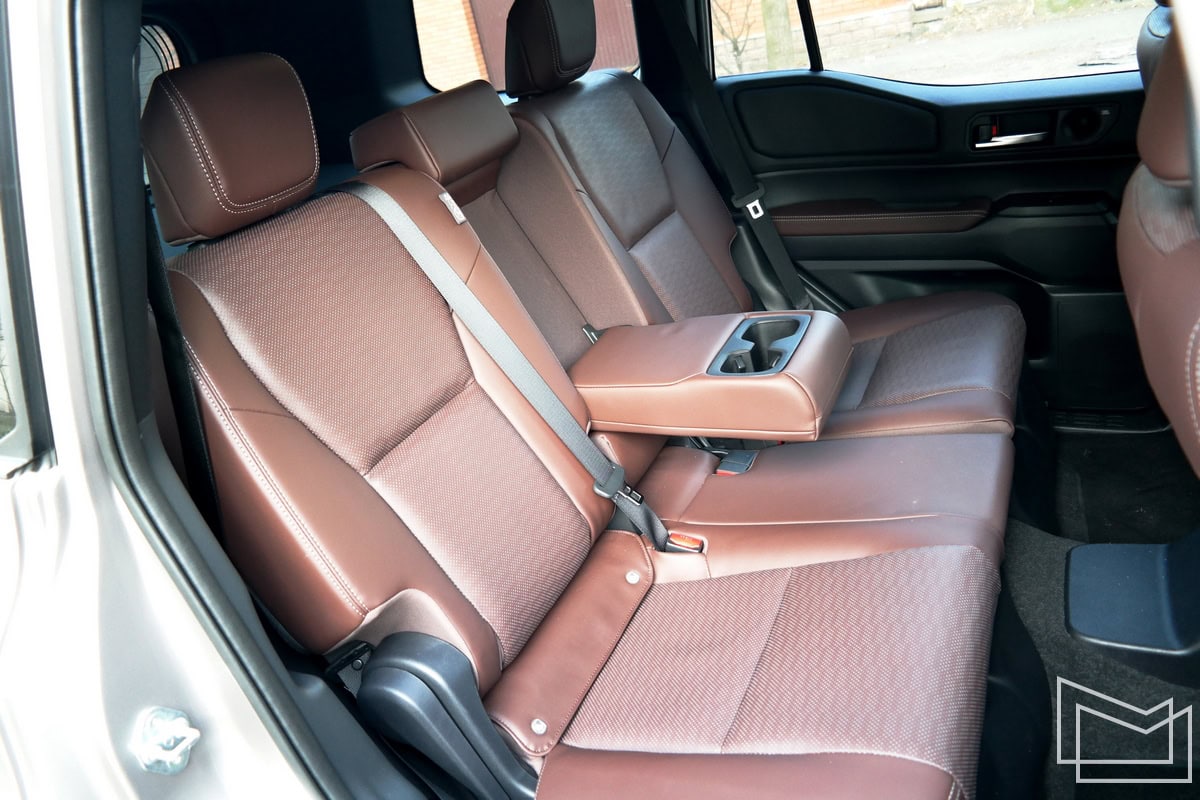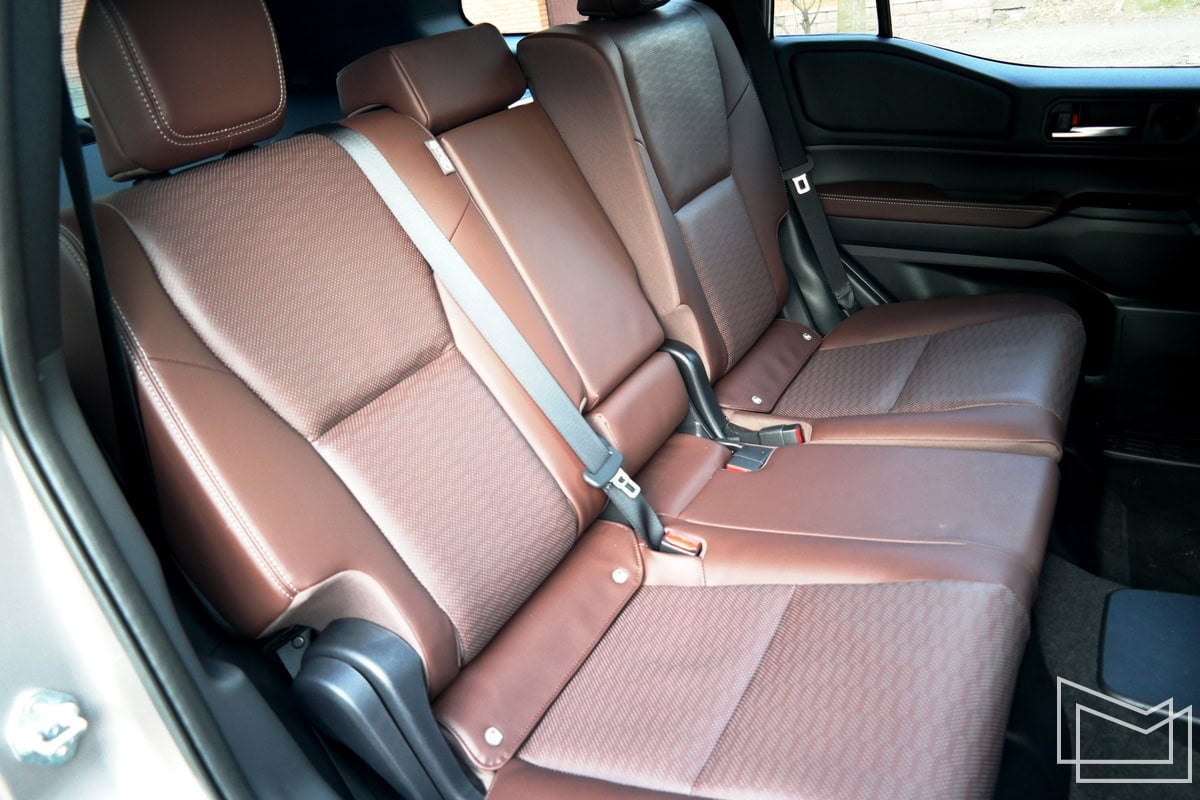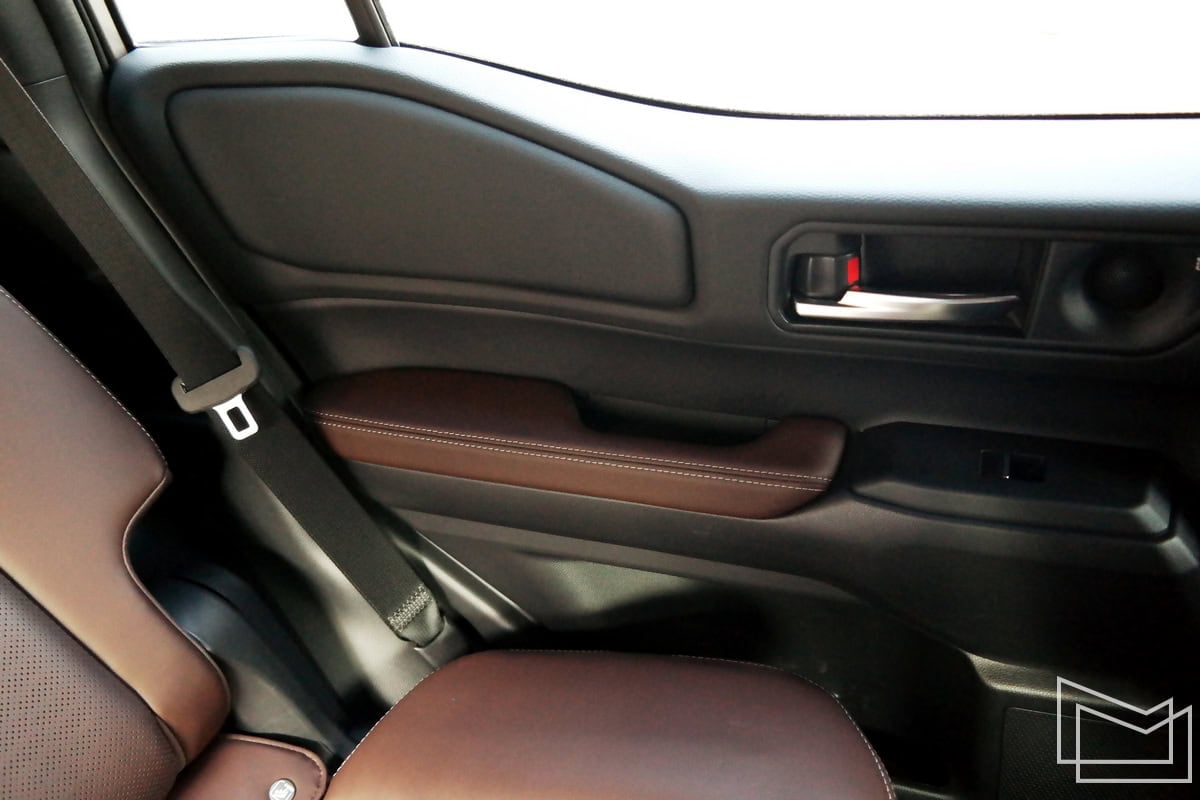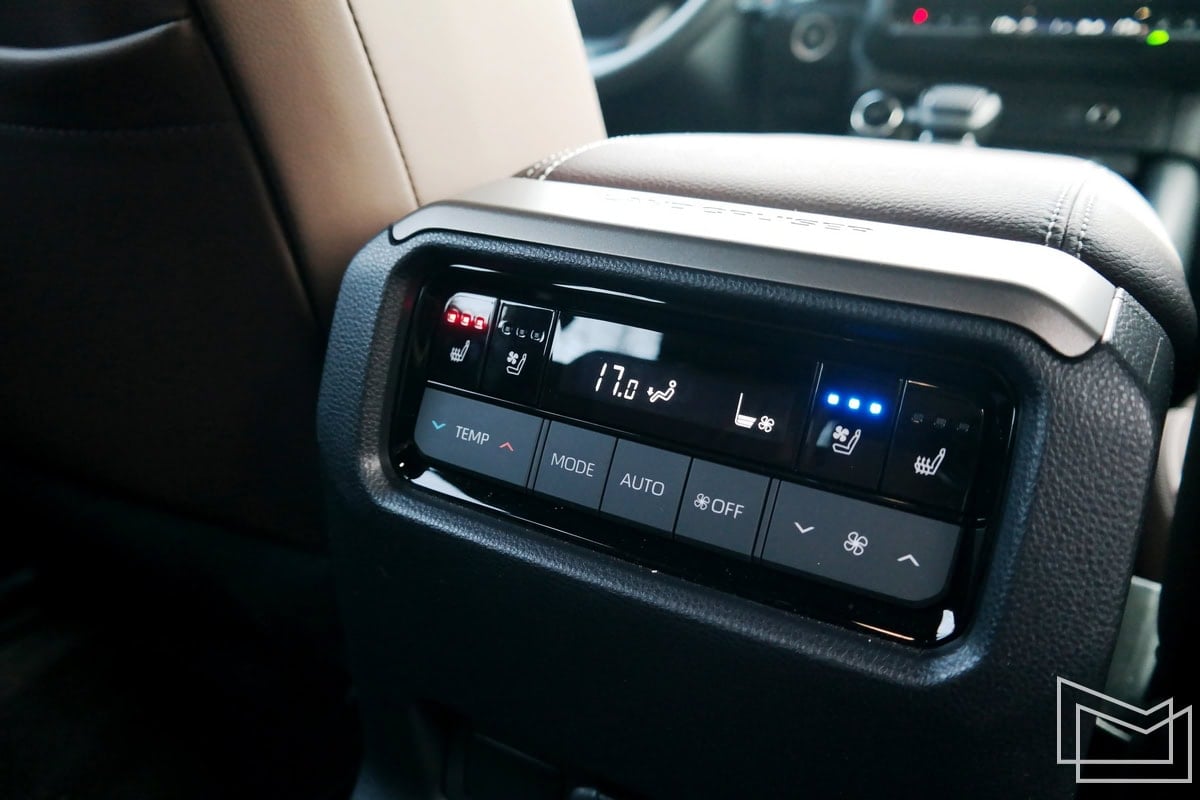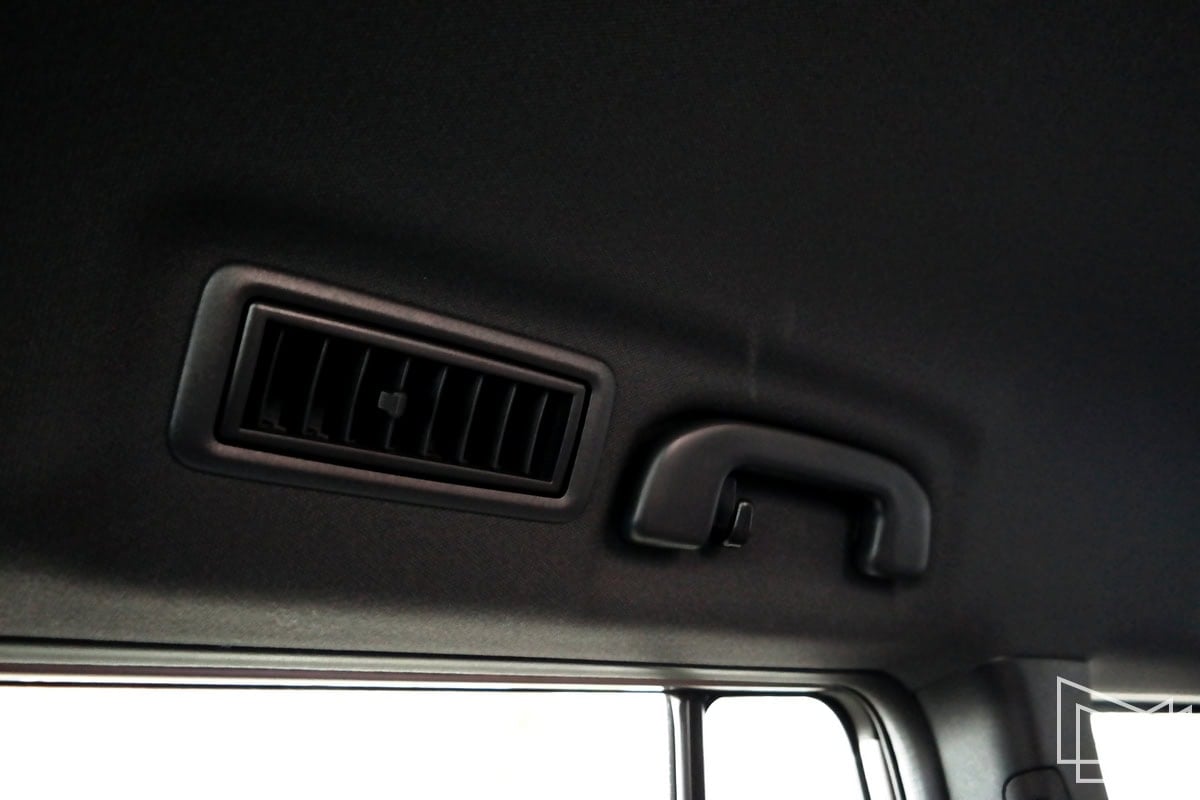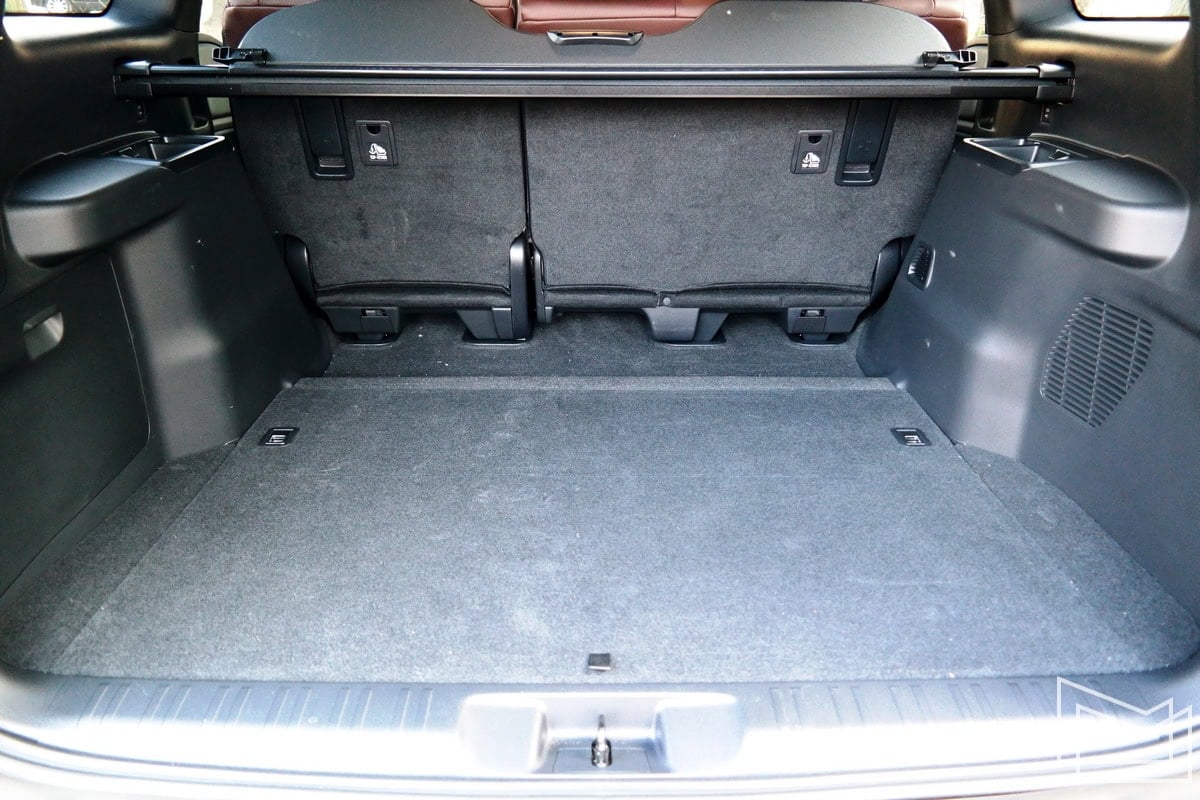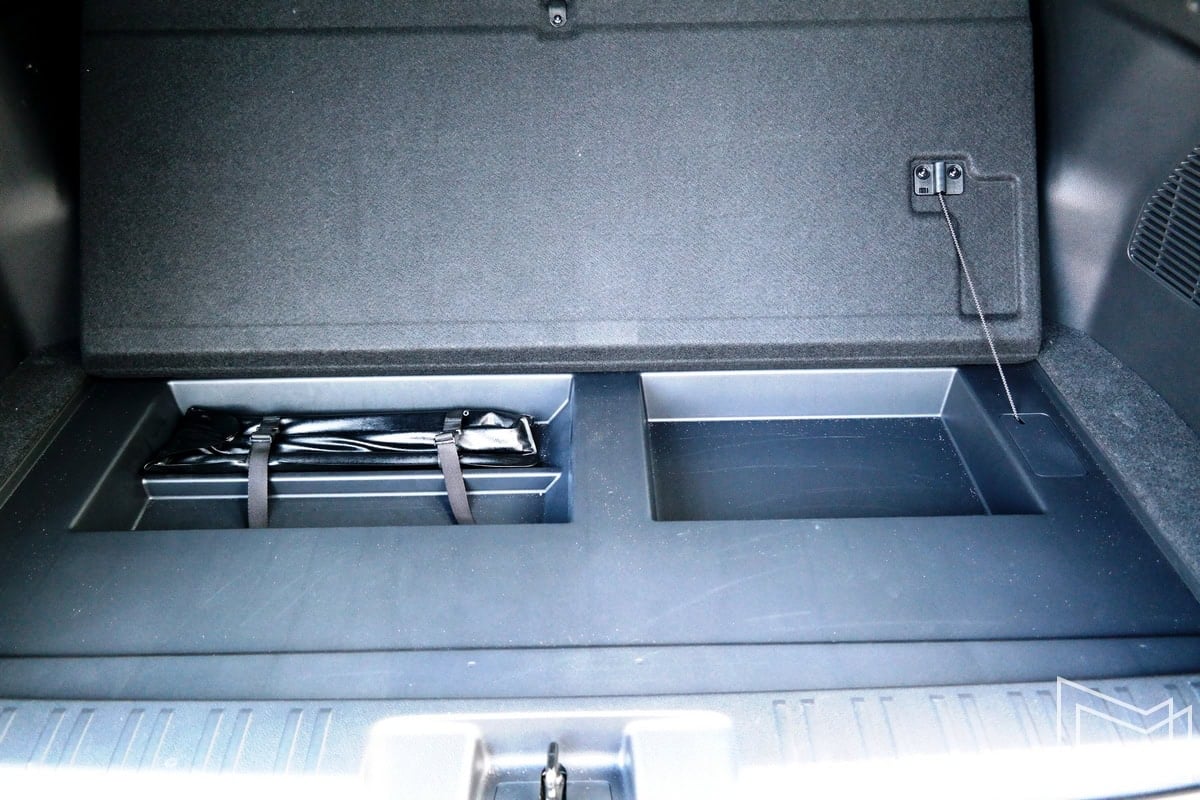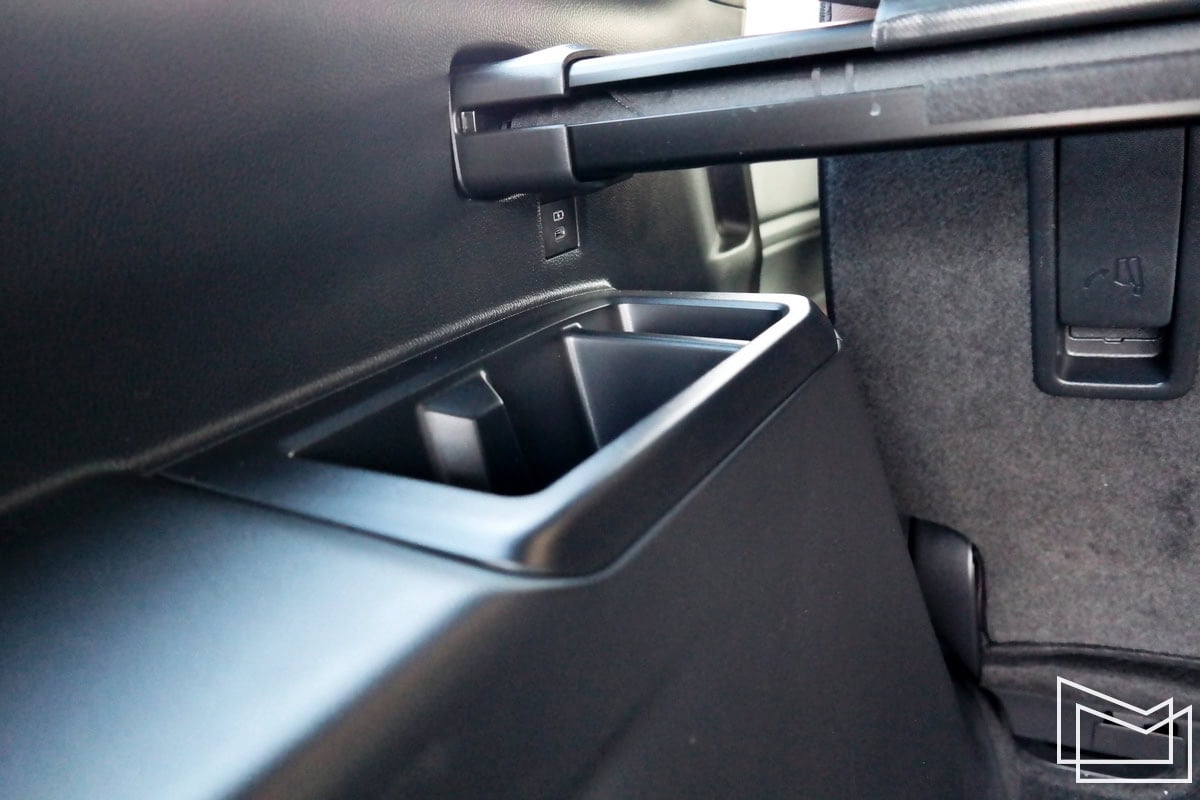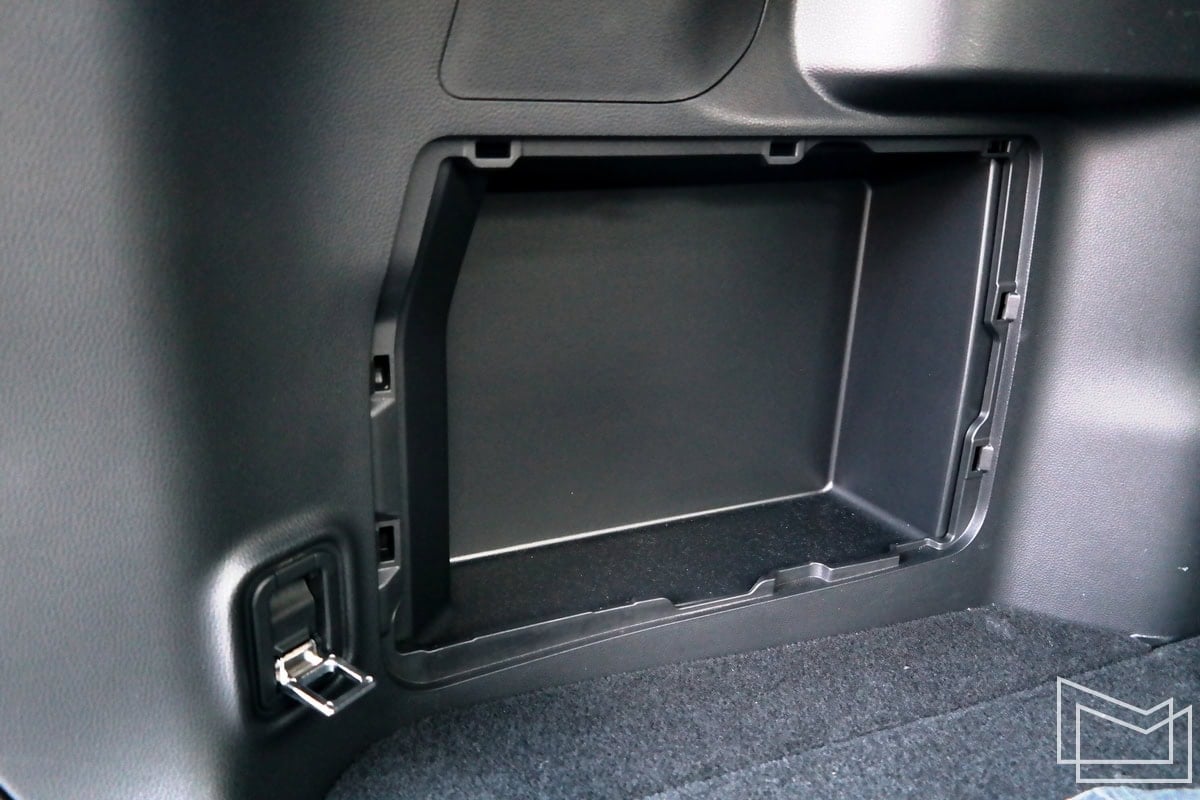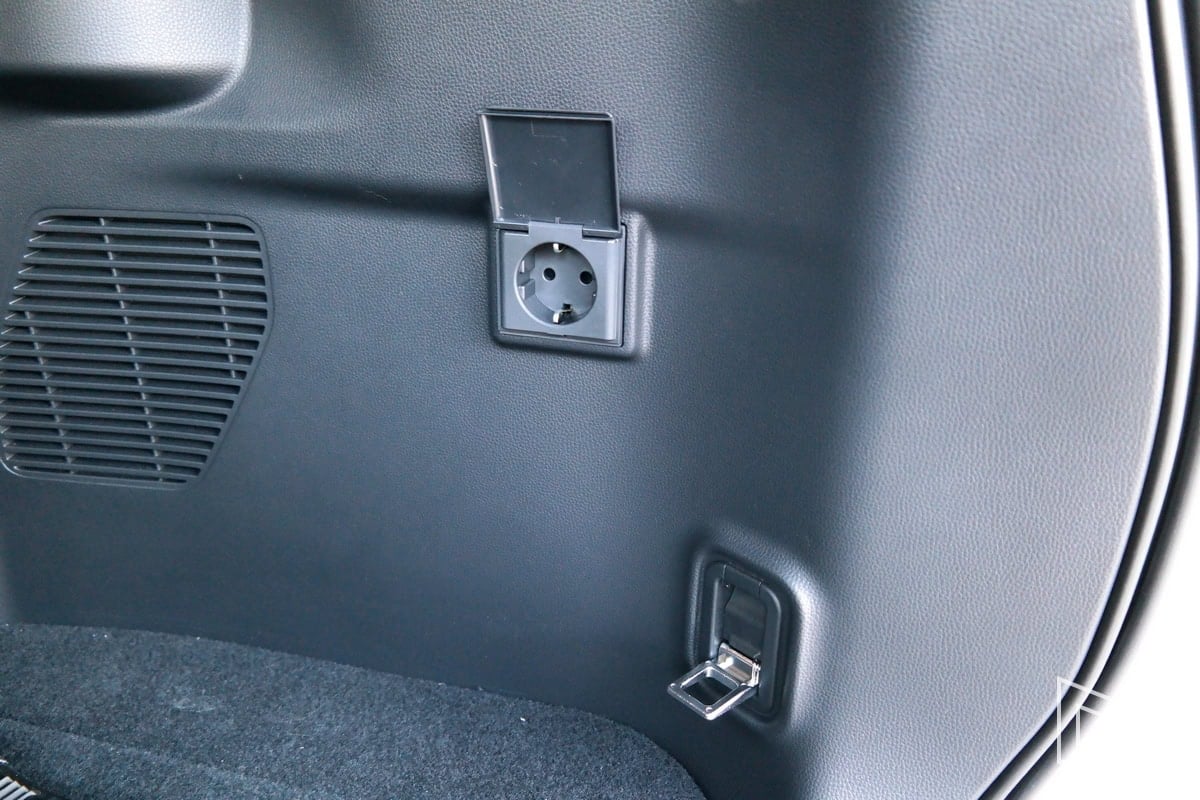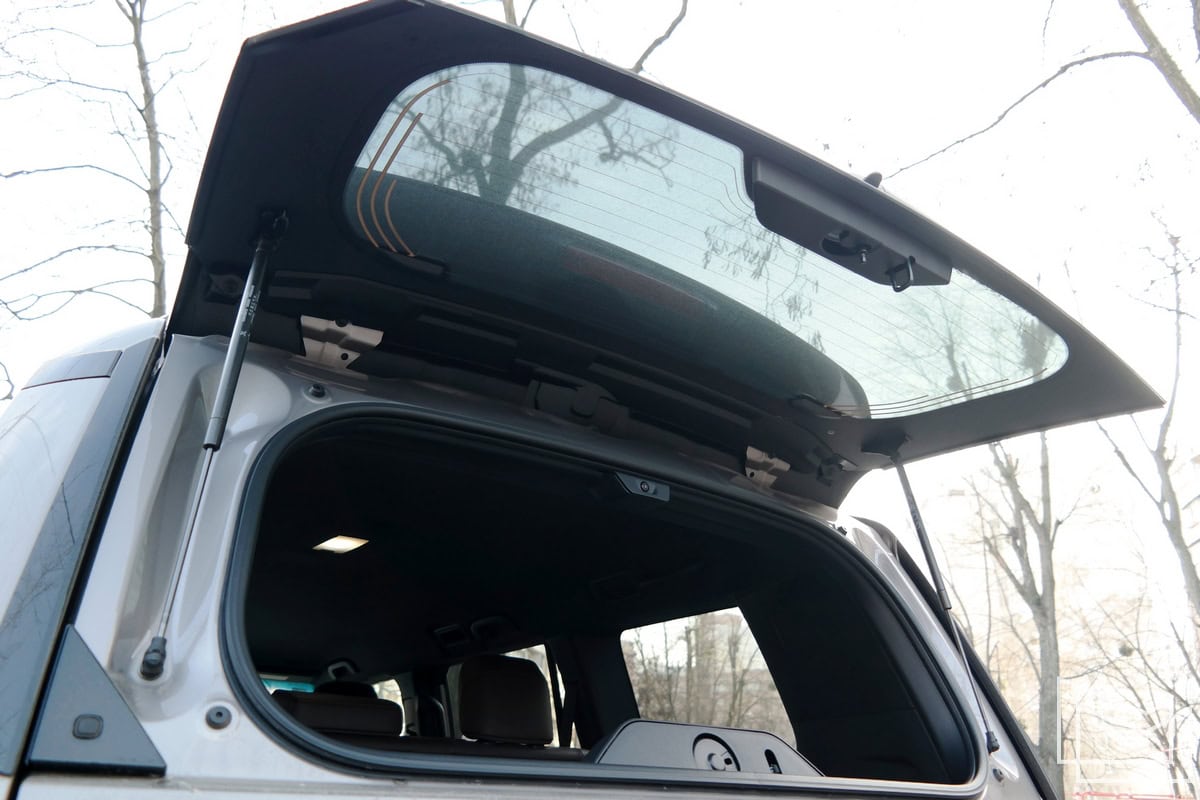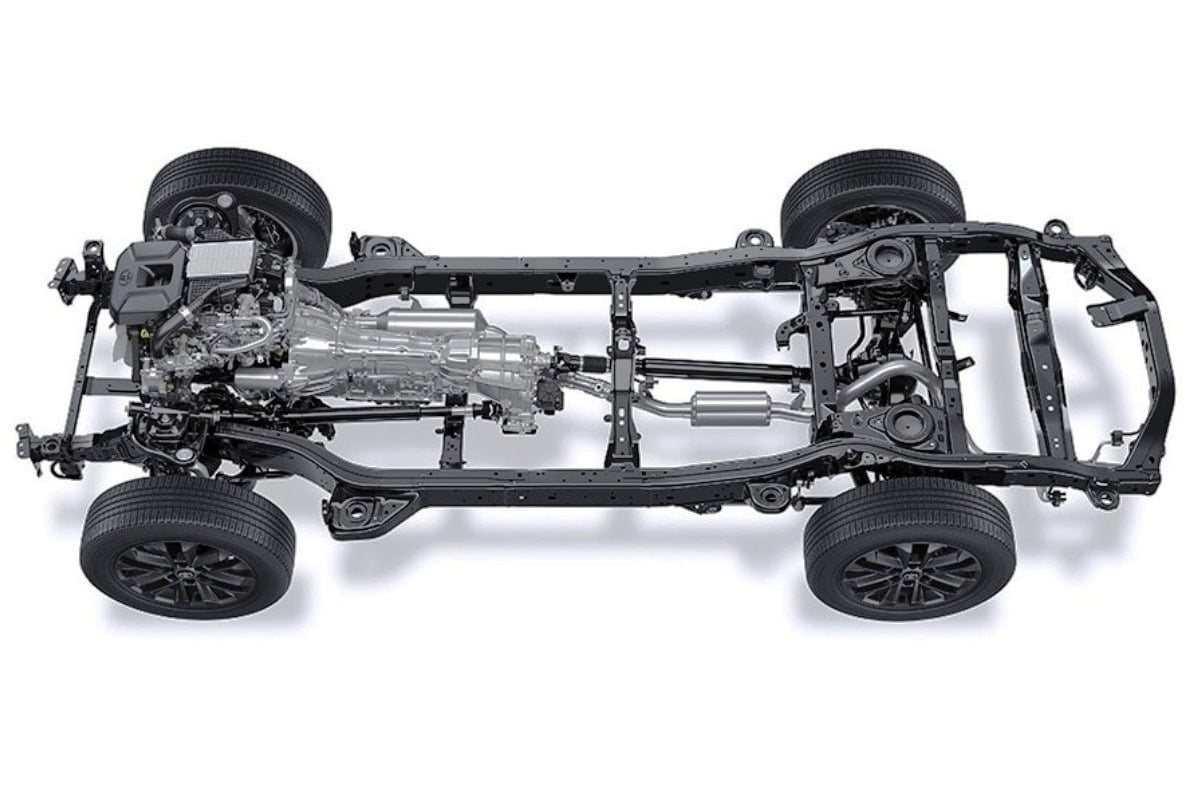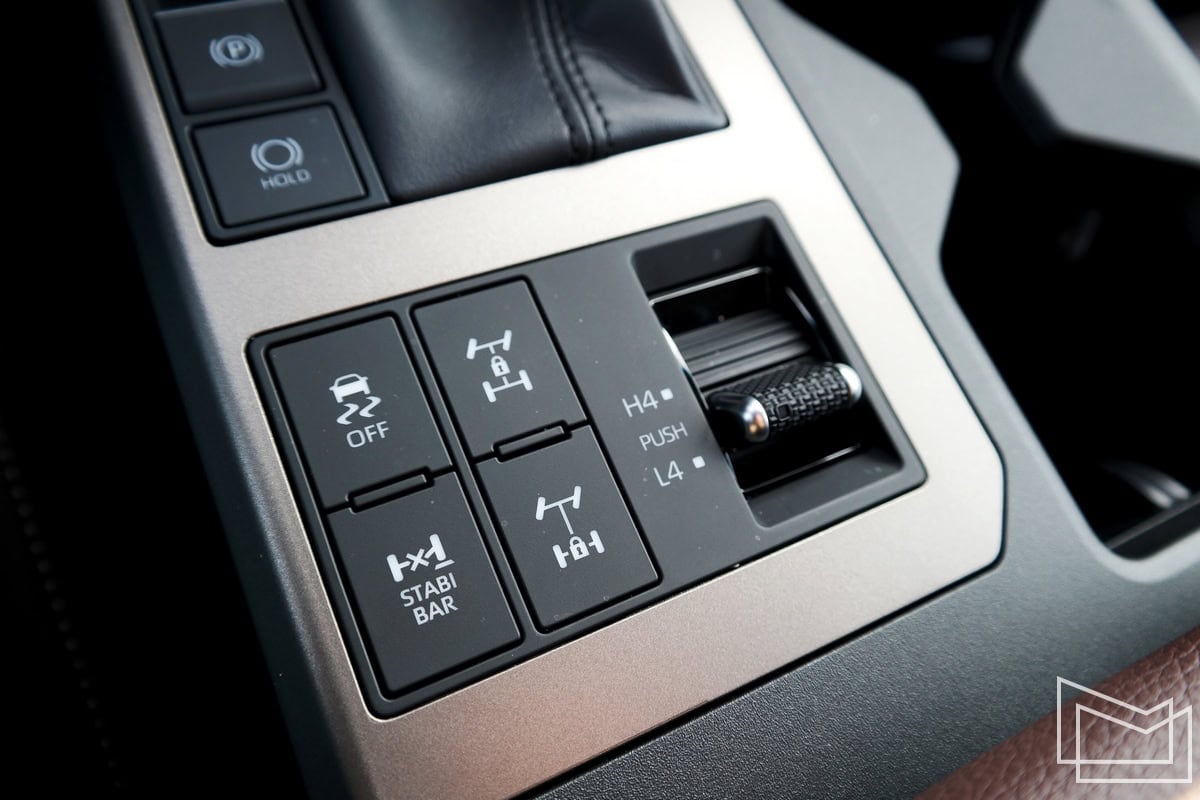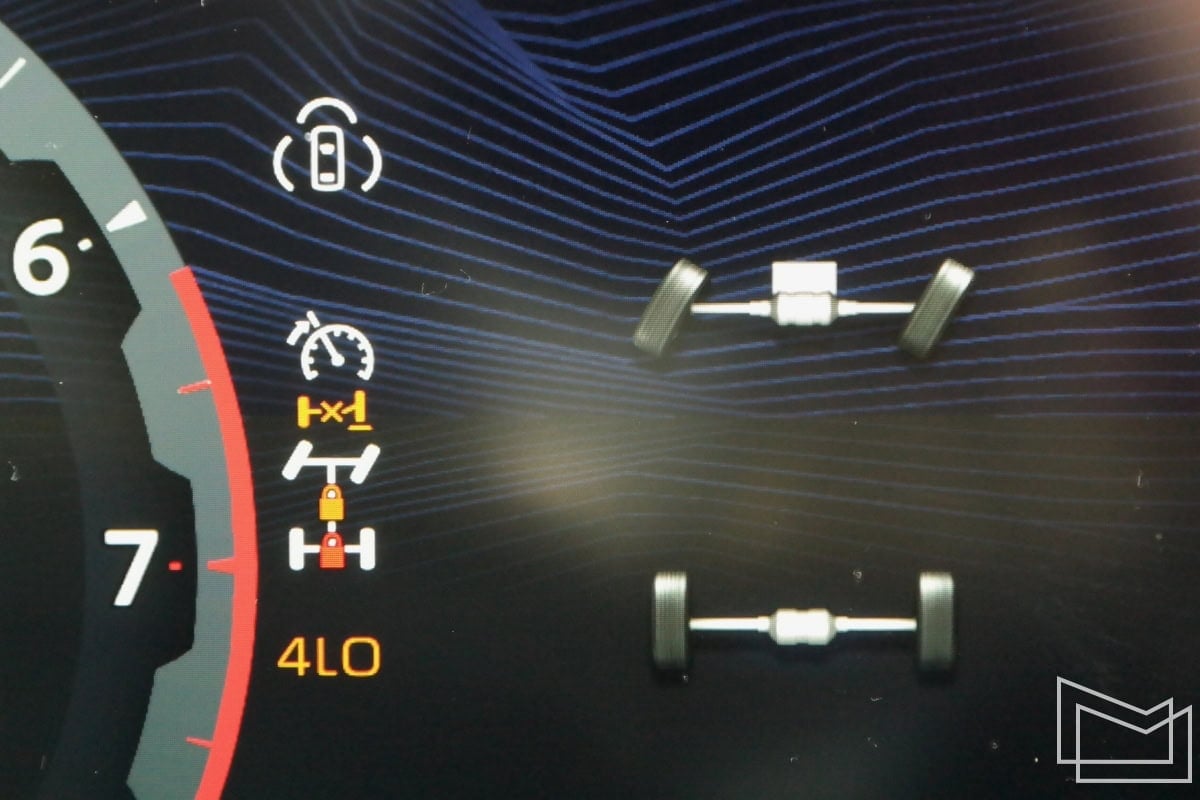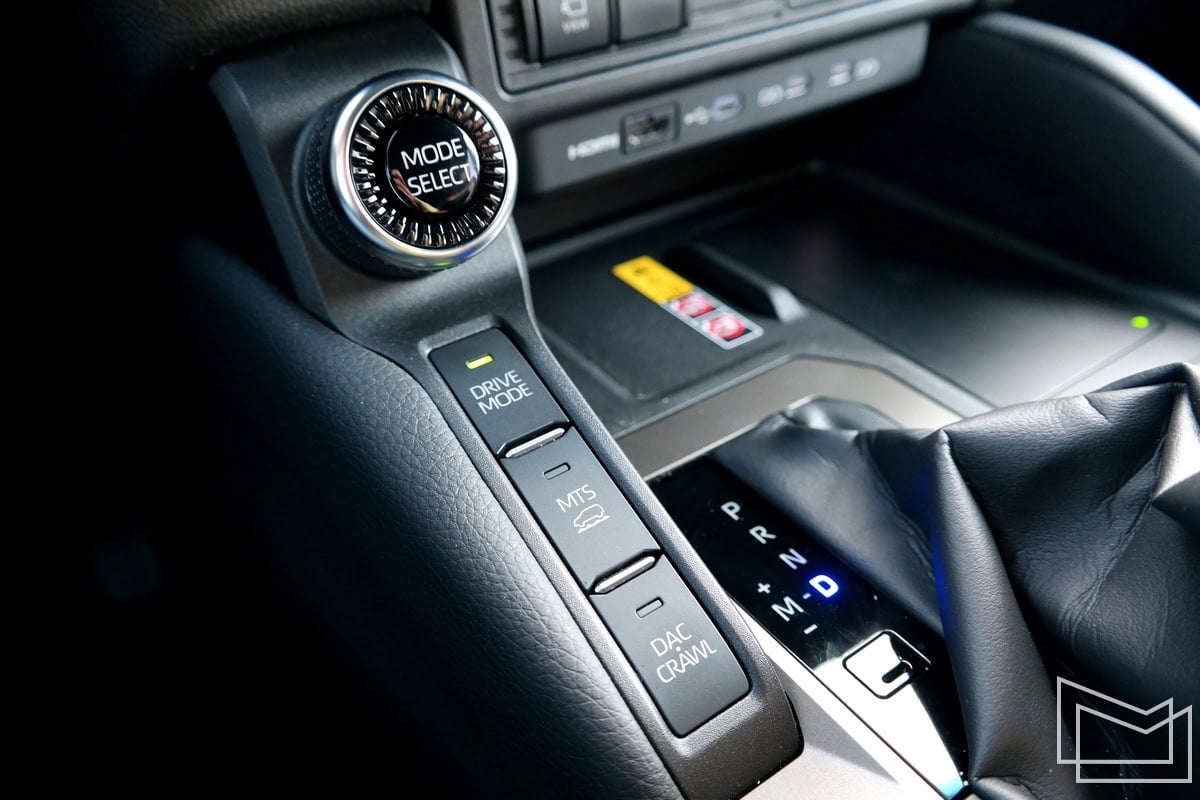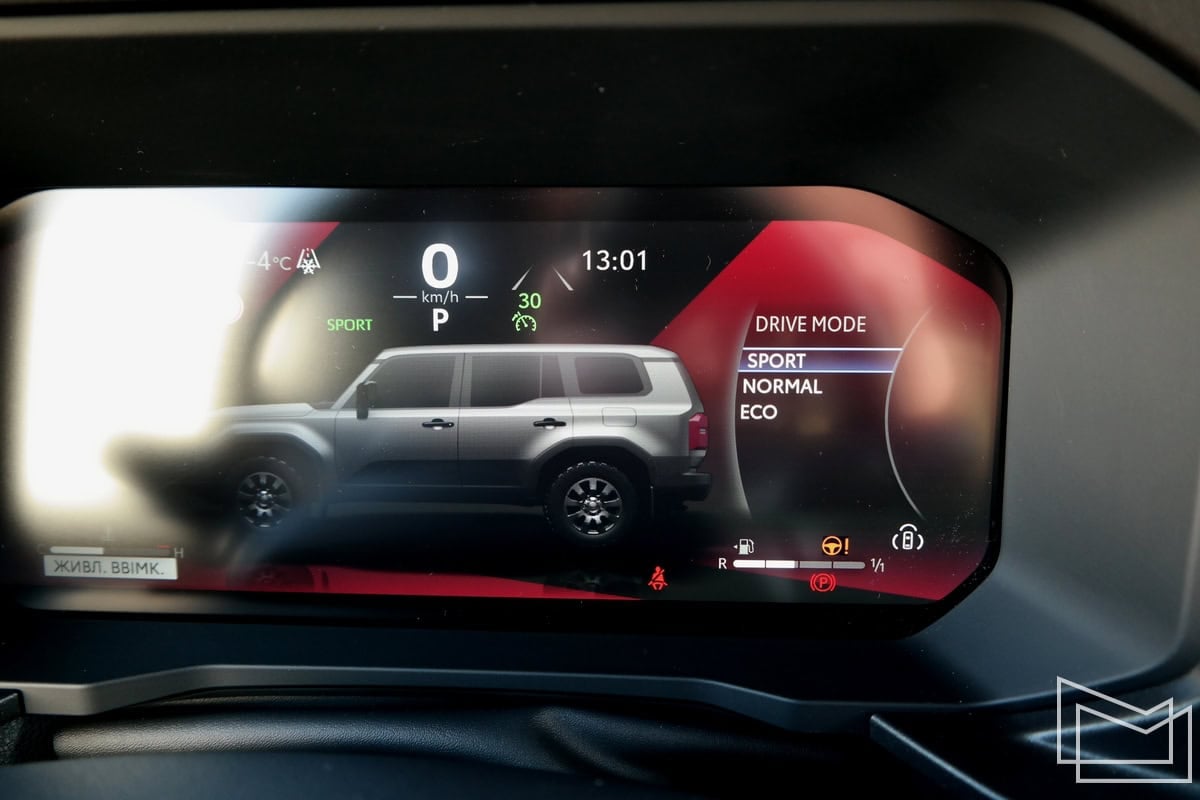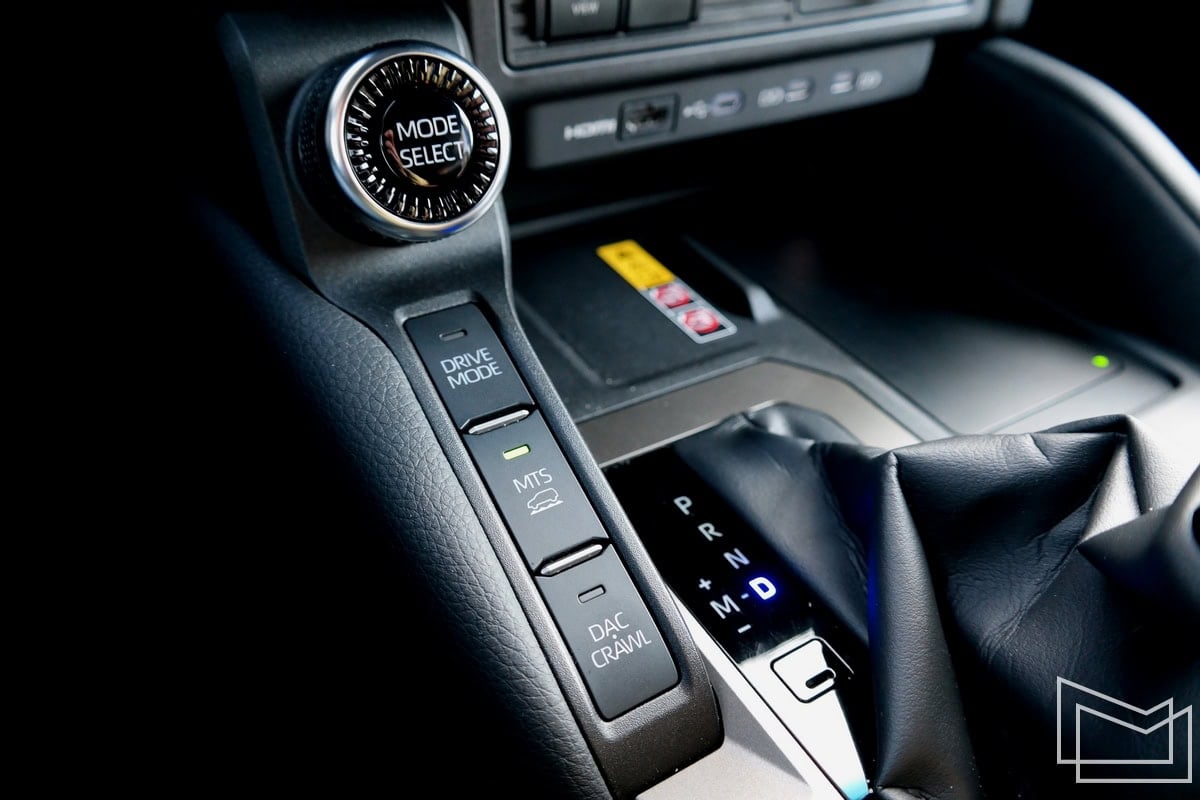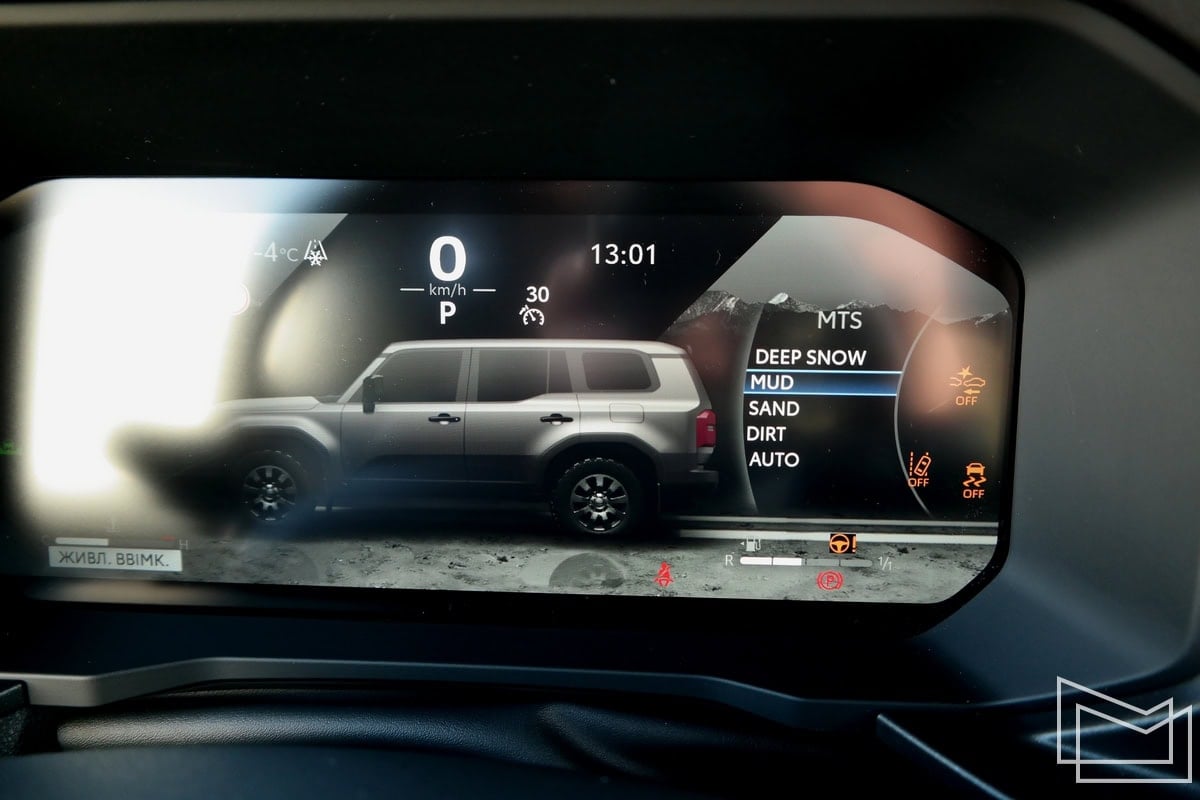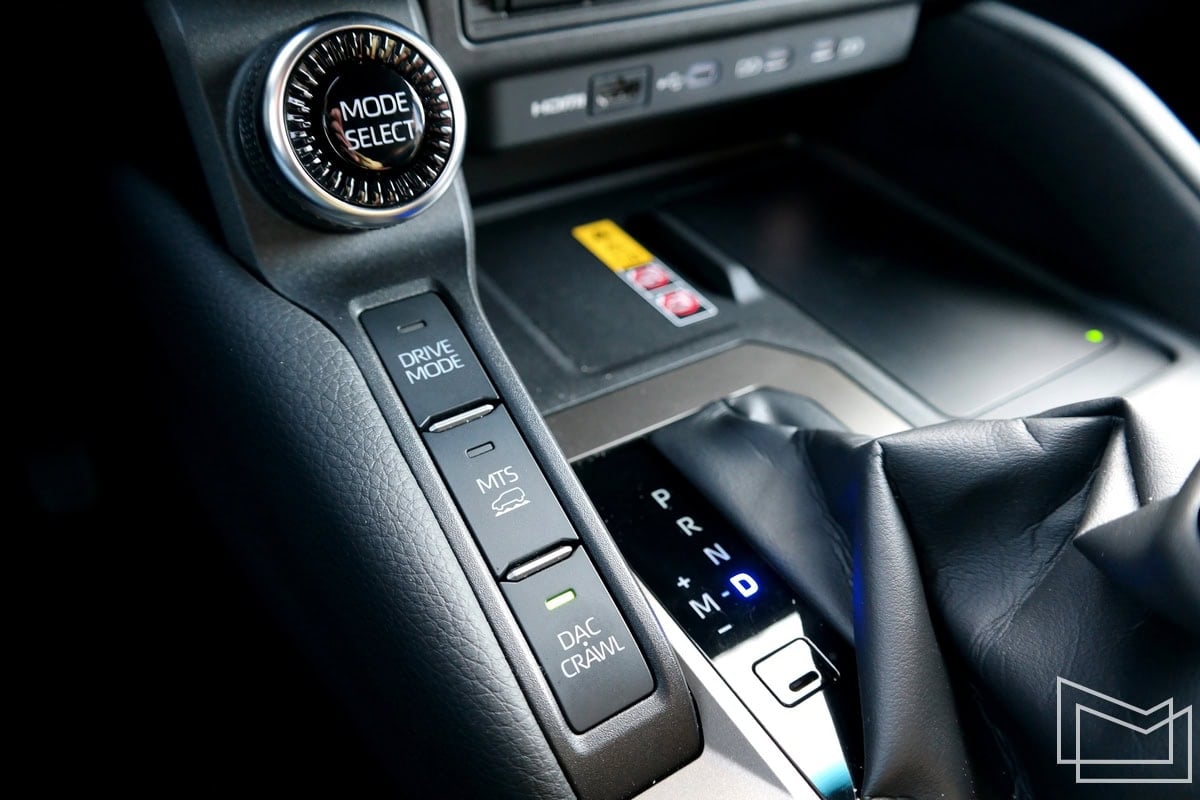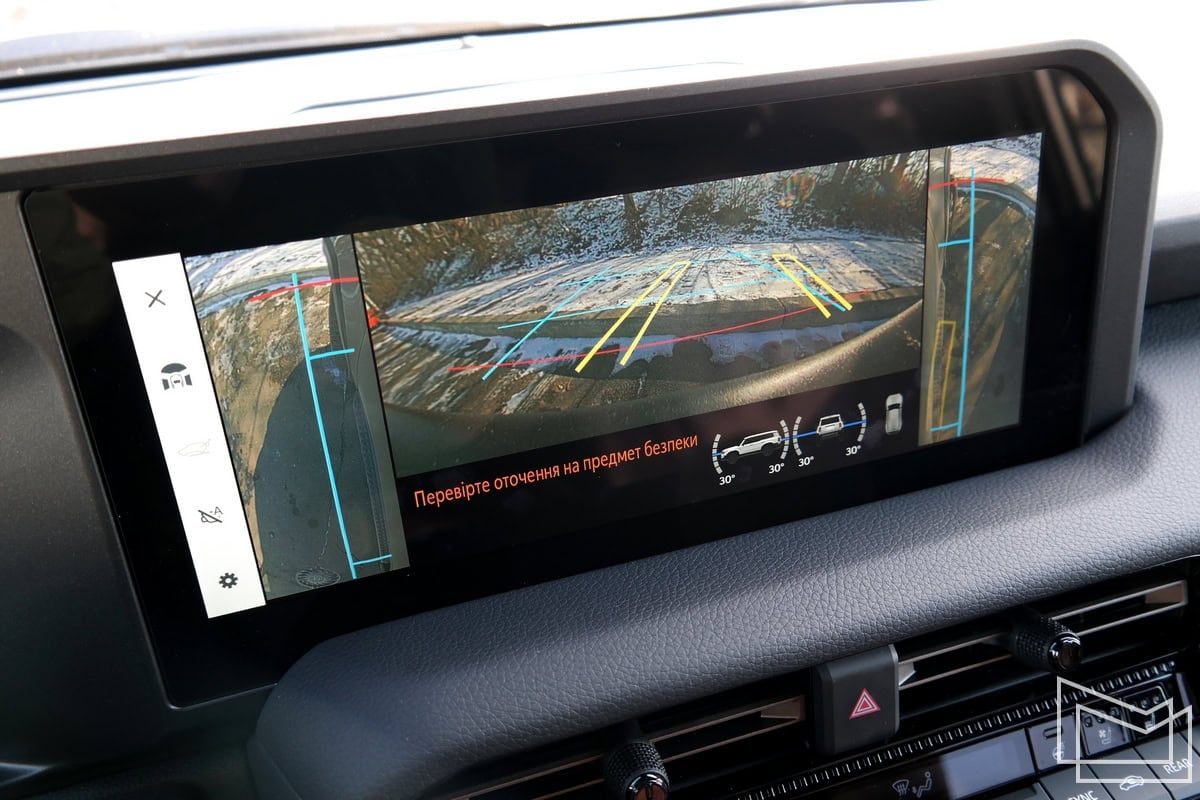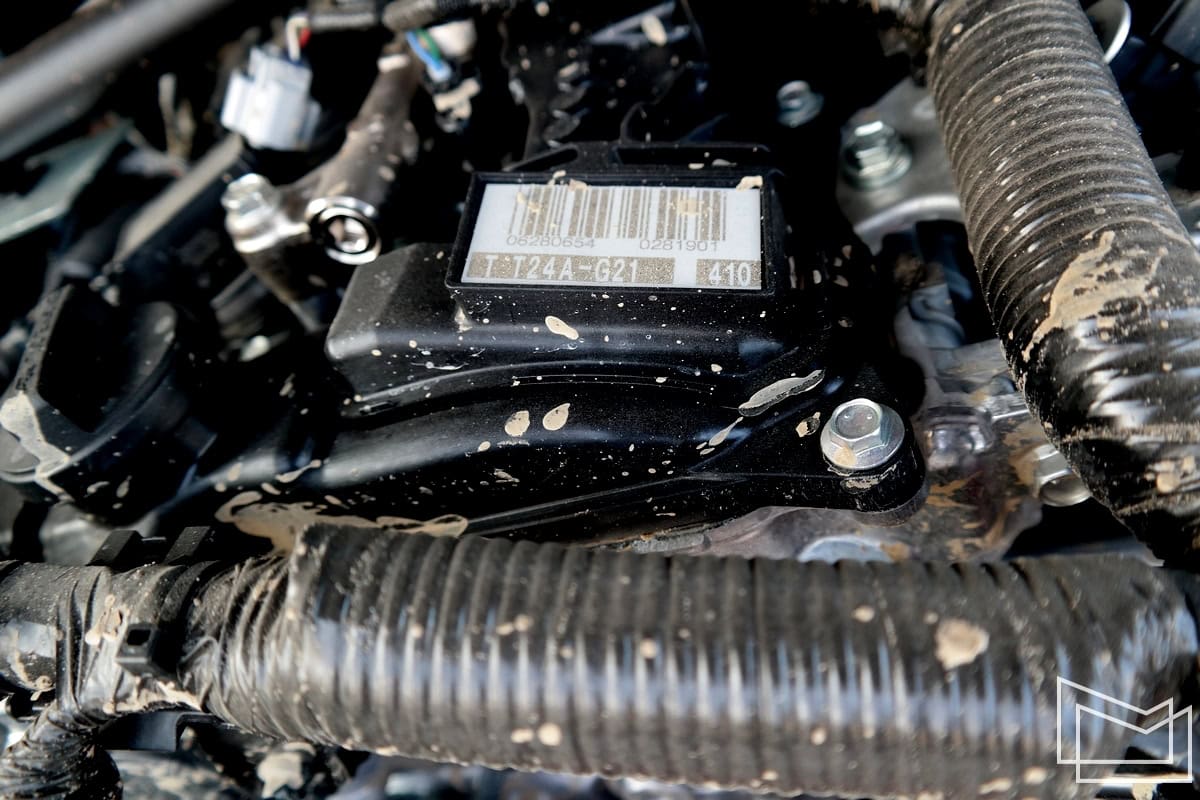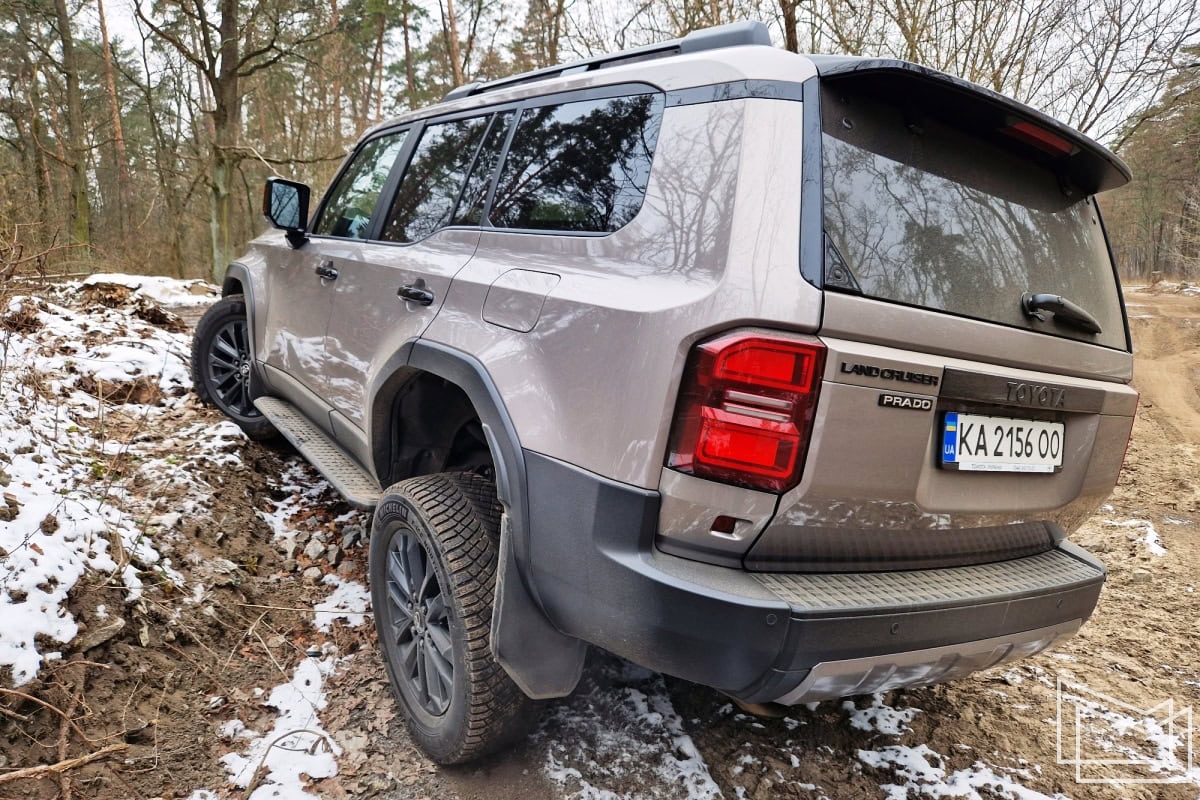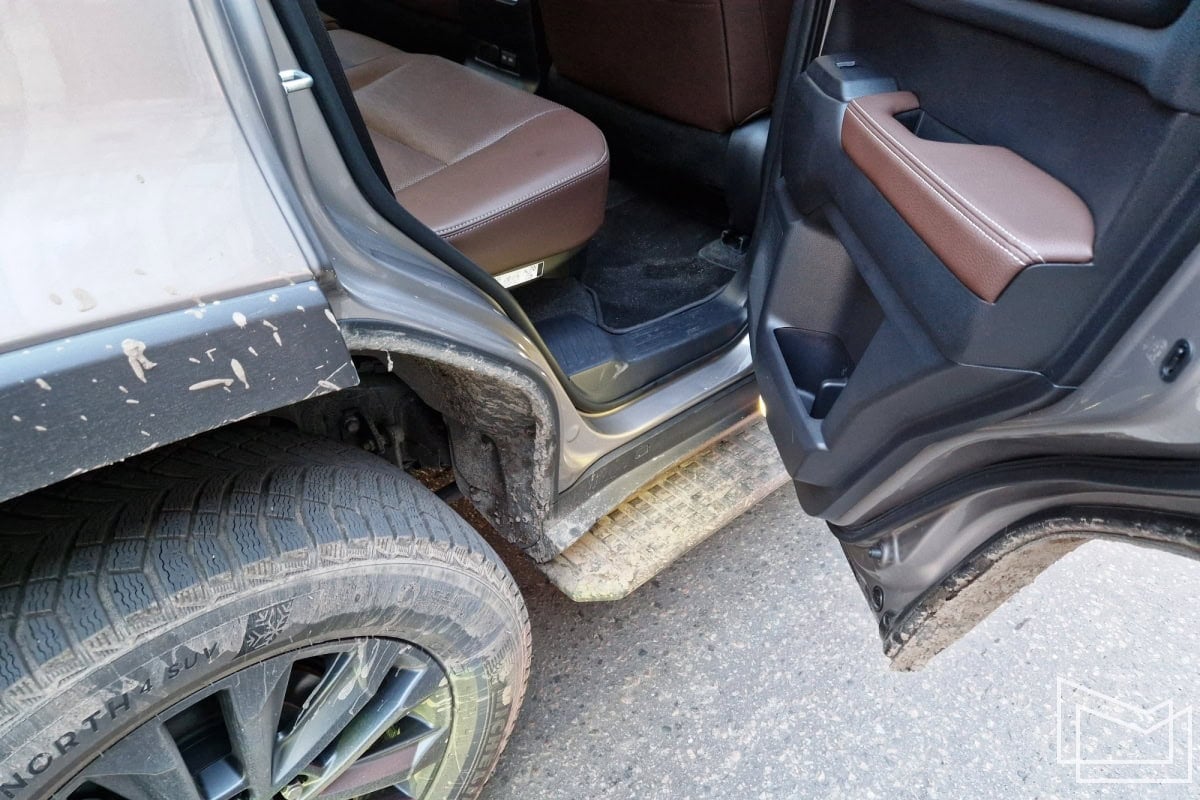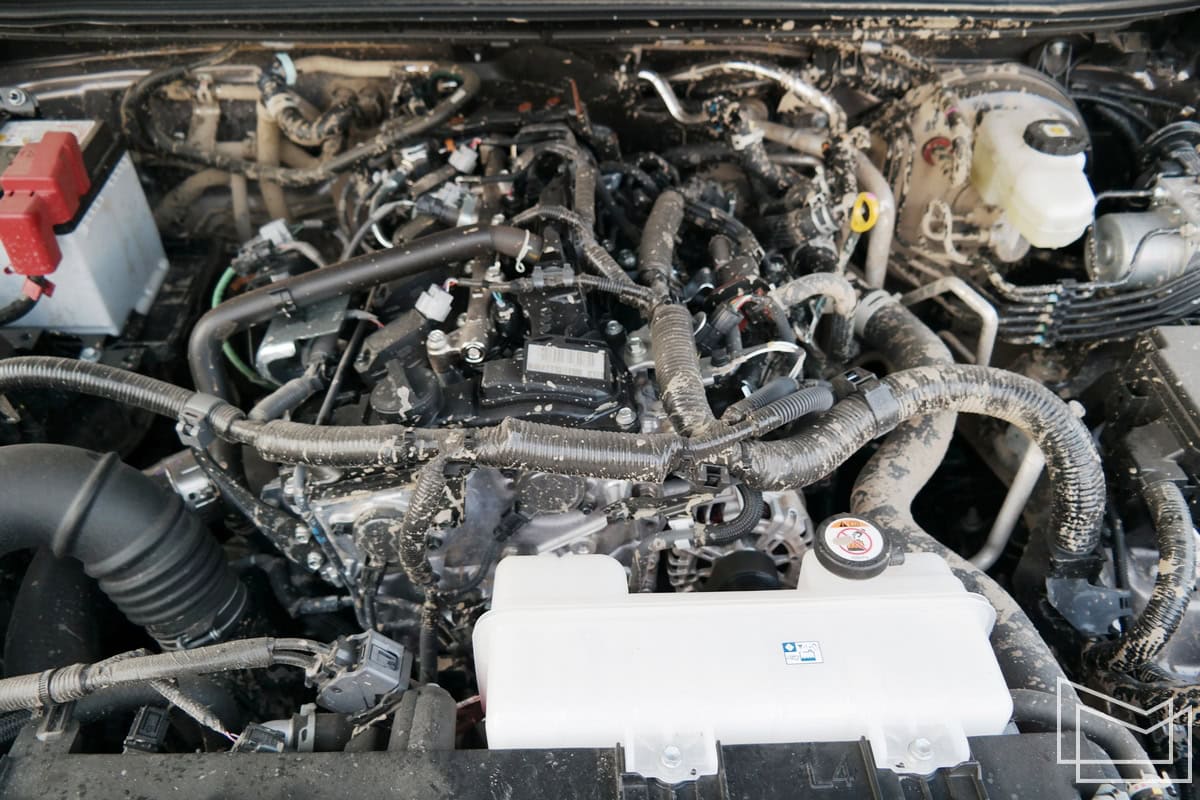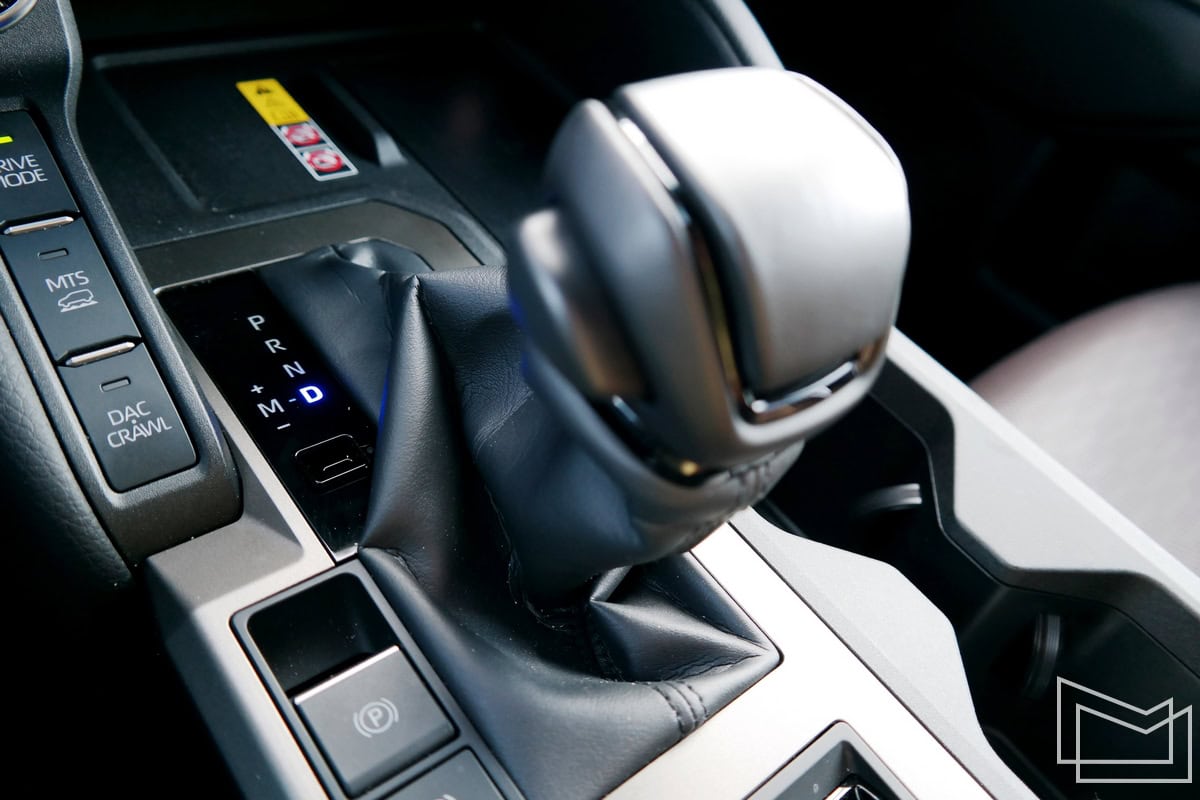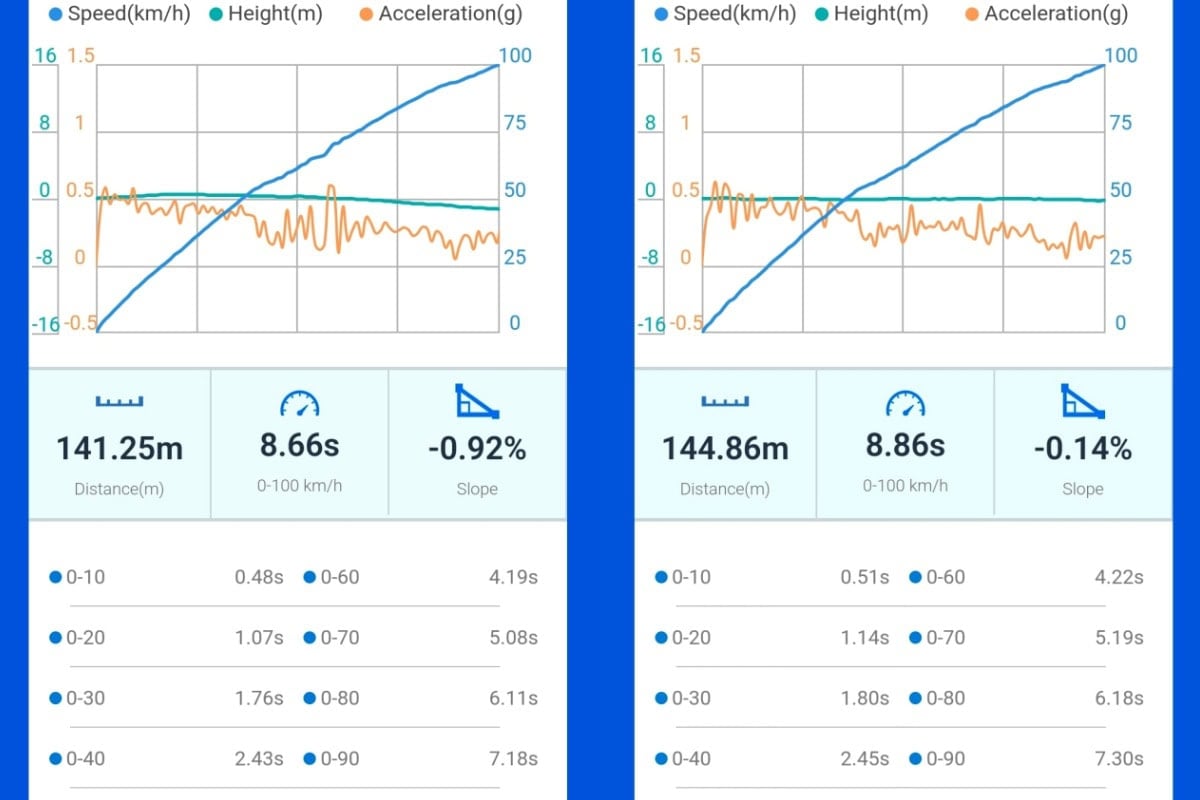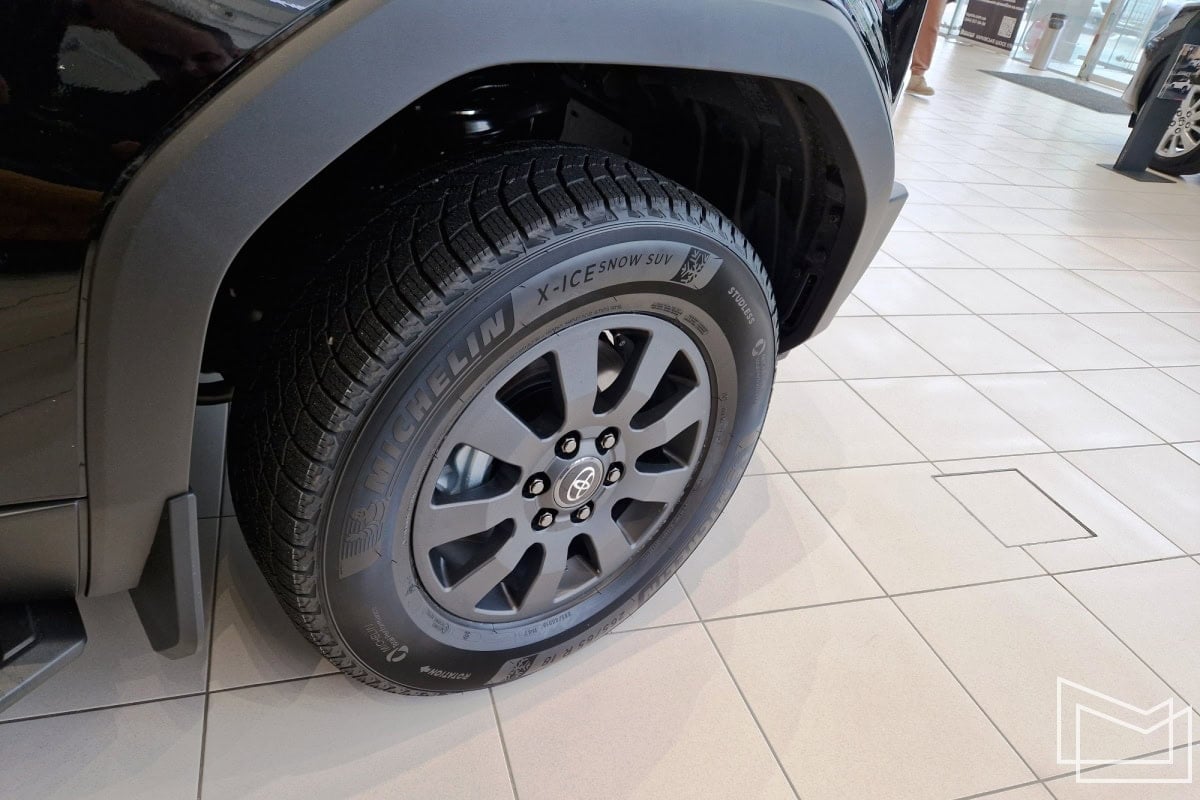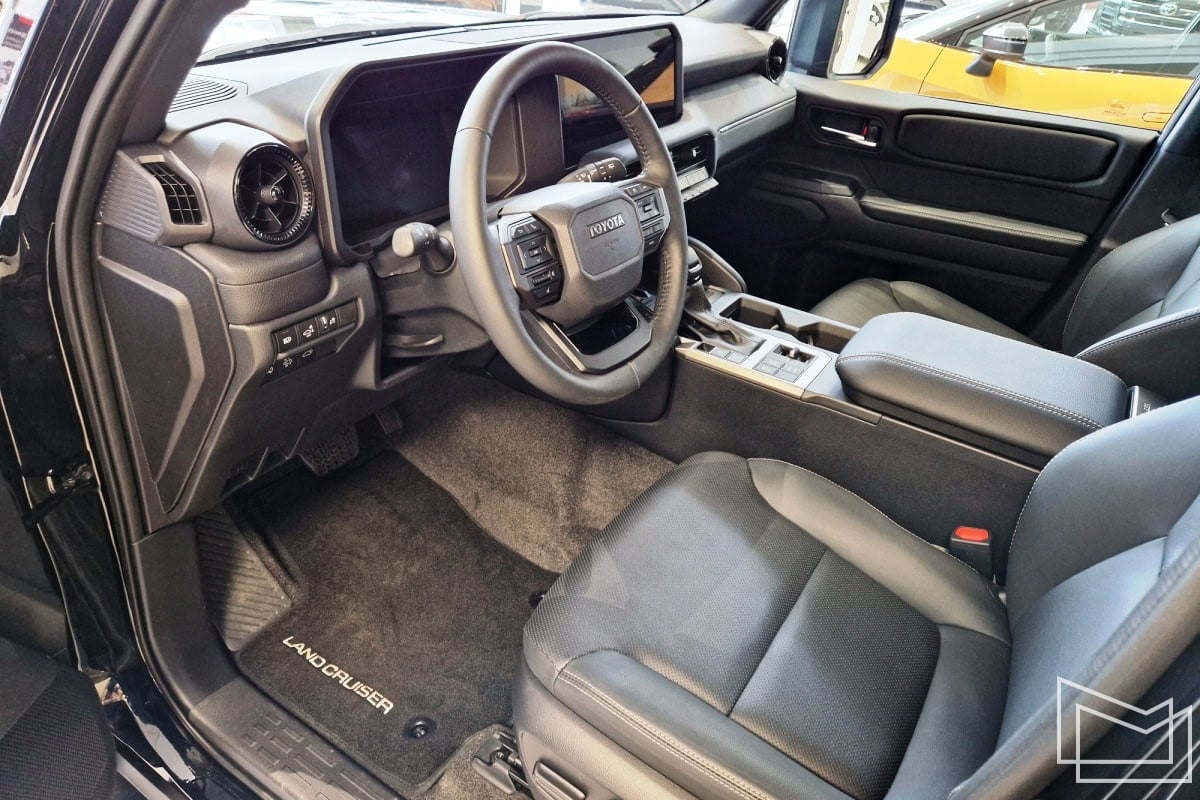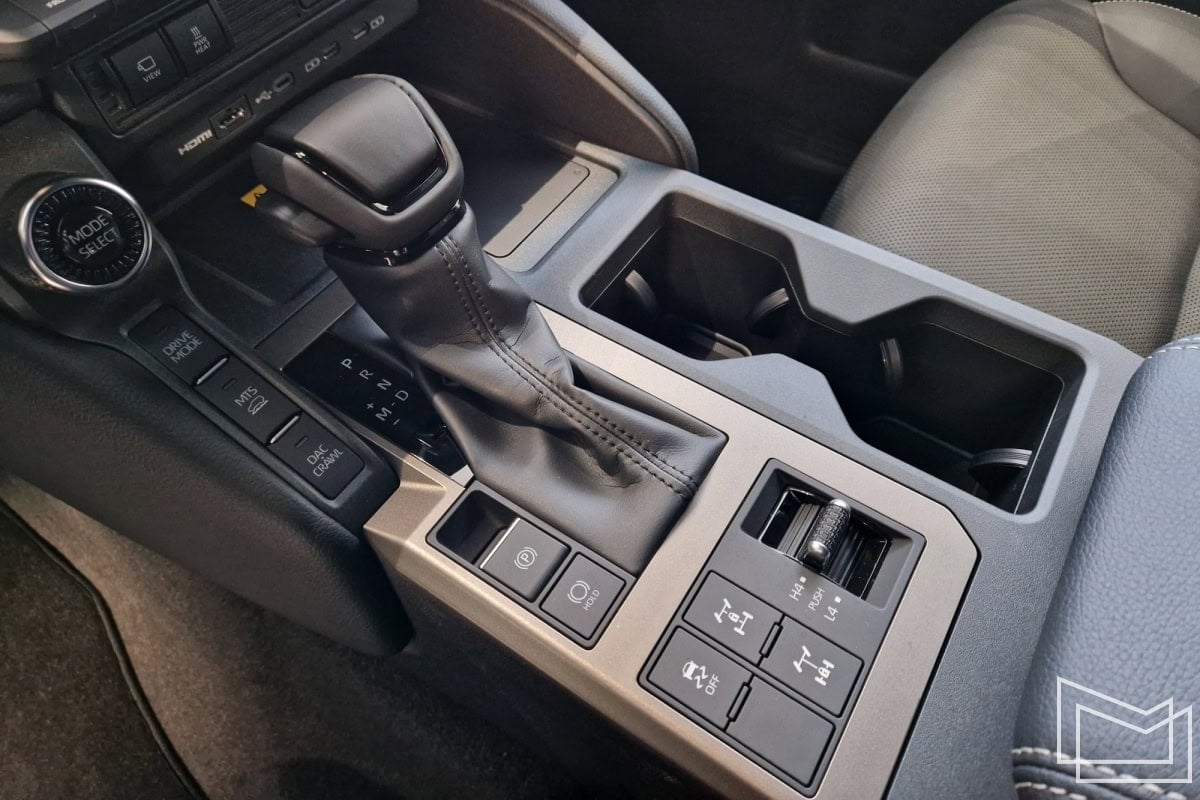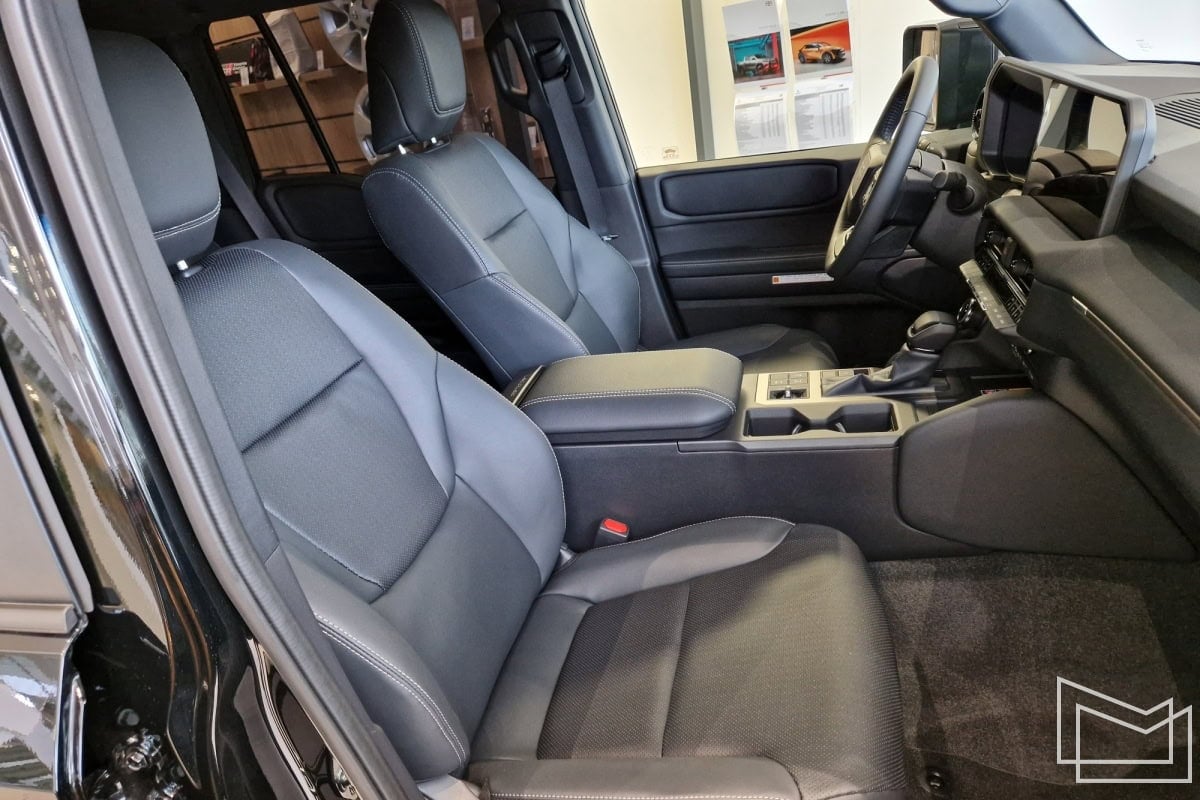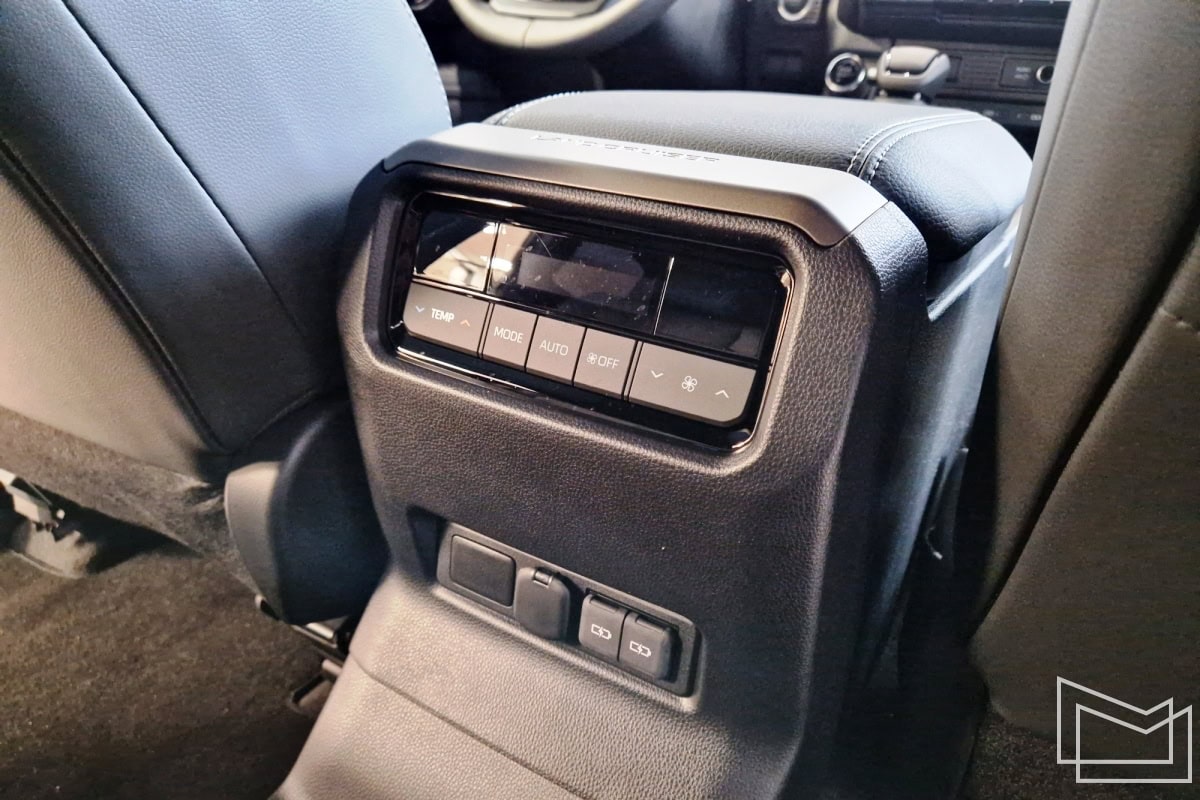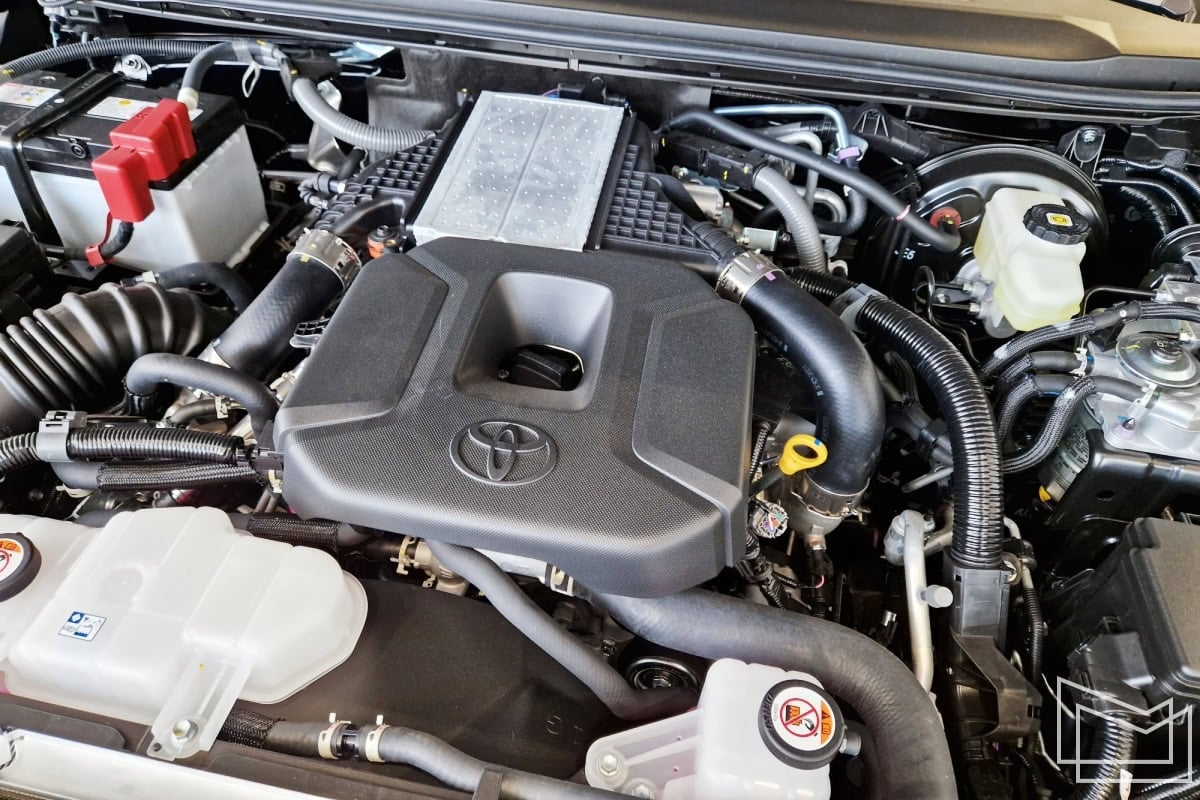The new generation of the Toyota Land Cruiser Prado SUV with the code 250 was first presented in the summer of 2023, at the end of 2024 the official Ukrainian presentation took place, and now at the very beginning of 2025 a detailed review and test drive of the car took place. Let's take a closer look at all the nuances of the car! Because, believe me, there will be a lot of them.
Design: your own mansion on wheels
A giant wardrobe on wheels! No, it's not even a wardrobe, it's a house on wheels! And given its size, it's not just a house, but a real estate with strong walls in the form of flat surfaces that dominate the design of the new Toyota Land Cruiser Prado 250.
In fact, the visual simplicity of the new Toyota Land Cruiser Prado's flat surfaces is deceptive. There's the rectangular grille and almost flat rectangular headlights; however, this grille is made with numerous square holes, a view camera and radar sensor for various systems are installed in the center, and the headlights hide the matrix high beam module. Here is a flat hood with a few lines; however, the stamping of the lines on it allows you to improve the view forward and better understand the dimensions of the car - you can literally "read" them by the lines and contours.
Here are the trapezoidal wheel arches with a large space for dirt drainage, wide plastic covers for the arches and the bottom of the doors, and the possibility of replacing the front bumper in parts - very practical on the road, where there is a constant risk of minor scratches and damage. The Toyota Land Cruiser Prado 250 also has several overtly design solutions: the roof is "cut off" by dark stripes on the pillars, the curve of the sill line on the rear door, large, almost rectangular headlights with smaller rectangles and turn signal lines inside. Even the mirrors perfectly combine practicality (large size) with design.
The characteristic rectangular design and many flat surfaces further emphasize the increased dimensions of the new generation Toyota Land Cruiser Prado: length - 4.93 meters; width - 1.98 meters; height - 1.93 meters. The ground clearance between the axles is declared at 205-215 mm (depending on the configuration and wheel size), and the ground clearance at the lowest points of the front and rear suspension is even higher - at 22-24 cm, depending on the measurement point and wheel size. The entry angle is 30-31 degrees (depending on the configuration and wheel size), the ramp angle is declared at 24-25 degrees, and the exit angle is 22 degrees. The maximum ford depth is up to 700 mm. The car is an excellent example of functional design: it looks strong, brutal, confident; at the same time, it is not just design for design's sake, because many decisions are dictated by real function. Even the step on the tailgate, which is visible in the cabin. Speaking of the interior...
This sense of functional design is also evident in the cabin. The completely new architecture of the front panel is designed to accommodate two large displays with familiar graphics and excellent image quality - this gives a sense of modernity. We made a separate climate control unit, spared no expense in terms of buttons to control additional functions (at the same time, they are very compact and logical), provided a soft pad on the door in the place where the driver's knee contacts, and have wireless charging - it's all about daily convenience. But round turbine deflectors, a copper-colored line with a ribbed texture, and a steering wheel with a giant TOYOTA inscription instead of a logo are about design.
The seating position is traditionally high, but a footrest and a handle on the side pillar make it easy to reach the cabin. The windshield is mounted more vertically, which reduces its area somewhat; but it's still enough for viewing, plus there is a special feeling when you see the upper corner of the glass somewhere far ahead. Although I should note that for taller drivers, such a seating position and visibility may not be entirely comfortable. But the rearward visibility is fine in any case: giant side mirrors, everything is perfectly visible! The center mirror also gives a good view, and if there are a lot of passengers or things behind and this blocks the view, then an additional camera is provided that transmits the image to the built-in mirror display. We've seen this on Toyota cars before; however, here's a little something else: this mirror is mounted on a touch-sensitive interior lighting unit - it's definitely Toyota!
The interior of the new Toyota Land Cruiser Prado 250 is free of wood or silver décor; instead, functionality and modernity reign supreme, which does not exclude the design elaboration of some elements - just great!
And the rear is not bad either. Of course, the overall fit and leg position are quite high due to the frame; of course, there is a massive central tunnel due to the massive all-wheel drive units. But otherwise, everything is very, very good. Due to the rather high seating position, the passengers' bodies are placed vertically and it seems that there is a good amount of knee room; but overhead, it is not just a perception, it is already the case. The backrest angle can be adjusted from almost vertical to reclining; although I would add the possibility of longitudinal adjustment of the sofa. As expected, there is an armrest and ventilation deflectors on the ceiling; there is also separate climate control and heated rear seats - great!
However, this was the case in the previous generation of Toyota Land Cruiser Prado; but the real unexpected "bonus" is not only heating, but also ventilation of the rear seats. By the way, as for the aforementioned tailgate step, it turns into a ledge in the cabin, which, as if on a subconscious level, gives a feeling of additional protection for rear passengers.
Just a few words about the rear of the cabin: theToyota Land Cruiser Prado 250 is an SUV; but it tries to give passengers the level of coziness and comfort that is usually characteristic of large and well-thought-out family crossovers. And it also provides a large (742 liters), well-thought-out, convenient, practical trunk. Finally, the trunk lid opens upwards, it is possible to open only the glass separately, there are convenient niches for small items and various sockets. Interestingly, the cup holders and USB-C ports in the trunk hint that the Toyota Land Cruiser Prado 250 can potentially be a 7-seater.
Technology: new frame, new systems, new turbo engine
The new generation of Toyota Land Cruiser Prado is built according to the classic rules of large SUVs: a strong frame, independent suspension in front, a solid bridge in the rear, longitudinal engine installation, permanent all-wheel drive, a lowering row, and differential locks. Everything seems to be the same as its predecessor; and at the same time, everything is completely different!After all, the new Toyota Land Cruiser Prado 250 series SUV is built on the GA-F platform, which involves the use of a new frame that is 50% stiffer than the frame of its predecessor. The front independent suspension still has double wishbones, springs and shock absorbers; the rear suspension is still based on a bridge and springs; however, the shock absorber mounting points have changed, more aluminum parts have been added, and instead of KDSS (body roll control system), a new "highlight" has appeared in the form of SDM - a front stabilizer with the ability to turn off. In addition, instead of hydraulic power steering, an electric power steering is now used, which makes it possible to integrate more driver assistance systems: for example, not only lane departure warning, but also returning the car to its lane.
Permanent all-wheel drive is built using a Torsen center differential, a lowering range, the ability to lock the center differential, and in the maximum configuration - also the rear differential. There are also proprietary driver assistance systems MTS (selection of the driving mode depending on the off-road conditions) and Crawl Control (cruise control for off-road, the system independently maintains a certain speed). It sounds like something similar to the predecessor; however, now the MTS also works in 4H mode, not just 4L - and rightly so. Finally, to wrap up with the transmission: the Toyota Land Cruiser Prado 250 now gets an 8-speed automatic transmission instead of the 6-speed transmission that was previously available.
Under the hood of the Toyota Land Cruiser Prado 250 for the Ukrainian market can be installed either the well-known 2.8 D-4D turbodiesel engine (205 hp and 500 Nm) with the code designation 1GD-FTV, or a new 4-cylinder in-line gasoline engine 2.4 Turbo (282 hp and 430 Nm) with the code designation T24A-FTS, which replaced the 4-liter V6 of its predecessor. The gasoline turbo engine has a somewhat "long-stroke" design (cylinders with a diameter of 87.5 mm and a stroke of 99.5 mm), a fairly high compression ratio of 11.0:1 and a dual VVT-i variable valve timing system. By the way, the new gasoline engine is actually new for the Toyota Land Cruiser Prado 250, because it is already found in some Lexus models - I will mention the Lexus RX 500h, which combines a 2.4-liter turbo engine and a hybrid system. I specifically cited this example because the Toyota Land Cruiser Prado 250 can also have a hybrid powertrain. We are talking about the 330 hp Hybrid i-Force Max version based on a 2.4-liter turbo engine and an electric motor. Unfortunately, this version is not offered in Ukraine; at least as of today.
Robust frame and permanent all-wheel drive, lowerslope and differential locks, MTS and Crawl Control for off-road assistance, off-road vision system MTM with the function of projecting the space under the car - everything is similar to its predecessor and at the same time everything has been improved in detail. Important changes include the emergence of an 8-speed automatic and the transition to electric power steering. A radical change is the replacement of the atmospheric V6 with a native 4-cylinder turbo engine of the T24Aseries - this is exactly what was installed under the hood of the test car. In this case, 282 hp (6000 rpm) of power and 430 Nm (1700-3600 rpm) of torque are promised. Also promised is a city fuel consumption of 13.8 liters per 100 km (a lot, but the previous Toyota Land Cruiser Prado with the V6 engine was claimed to have 15.5 liters), as well as fuel consumption in the country cycle at 8.9 liters per 100 km. The top speed is declared at 165-170 km/h, regardless of the engine, but depending on the configuration and wheel size. So...
Behind the wheel: good gasoline turbo, even better comfort and ease of handling
So much has been said about the engine above that it makes sense to start with it. Moreover, the pairing of a turbo engine and the latest 8-speed automatic is simply excellent: good engine traction in a wide range of speeds, adequate acceleration and speed gain, no noticeable gear changes, and clear follow-through when the accelerator pedal is pressed. And all this changes significantly depending on the selected driving mode.
For example, in eco mode, the gearbox tries to shift up early, the engine constantly runs in the range of 1,500-2,000 rpm - and in general, surprisingly, even there there is enough traction for movement and smooth acceleration. The only thing missing is either maximum silence or a well-placed engine sound: you can constantly hear a quiet humming sound from under the hood (although some passengers compared this sound to a cat purring). In normal driving mode, the engine operates in the range of 1.7-2-2.5 thousand revolutions, and if acceleration is necessary, the automatic transmission is in no hurry to shift higher and allows you to gain 3-4 thousand - and here you can already feel a uniform increase in power, there are no turbo boosts and dips in traction. Finally, the sport mode involves even later shifts and even higher engine speeds: now 3-4 thousand is the norm for it, and during accelerations in the "pedal to the floor" mode, the digital tachometer can reach even 5.5-6 thousand revolutions for a moment. The beautiful roaring sound still doesn't appear, but the sharpness of the accelerator response and determination in rapid acceleration is simply excellent.
But the impression is that the steering wheel becomes heavier in sport mode. But here's the question - why? After all, this steering wheel makes 3+ turns from stop to stop and you have to work your hands noticeably in tight turns, while during sharp maneuvers there is a constant feeling of driving a heavy (about 2.3 tons for the gasoline version) and large car that loves to roll in the corners with its high body. Therefore, I have nothing against the sport mode of the engine and gearbox, but I would like to combine all this with the light steering of normal or eco mode. Frankly, in the case of the Toyota Land Cruiser Prado, I just want to relax and go wherever I need to go - whether on the roads or just by direction. The suspension will help with this. Good comfort and softness of movement, light swaying on the waves of asphalt, large wheels drive over small pits like a skating rink. I'll be honest and say that there are still some vibrations from the heavy rear axle and large wheels. But in general, the way the large frame Toyota Land Cruiser Prado 250 SUV with a solid rear axle and no pneumatic cylinders in the chassis drove is a real achievement for a vehicle of this format.
When it comes to the perception of Toyota Land Cruiser Prado's comfort, a reference point is important. If the reference point is the previous Prado with KDSS, it is very likely that the new car will seem softer. If the reference point is the previous Toyota Land Cruiser Prado without KDSS and on "puffy" thick tires with small rims, the new Toyota Land Cruiser Prado will ride roughly on par with the suspension comfort. But it will offer much easier handling: here I'm talking both literally, meaning light steering, and mentally, in terms of understanding the car and the smoothness of its movements. Finally, if we take modern crossovers with independent multi-link suspensions as a starting point, they are expected to be better and more "car-like" on good roads.
However, it is unlikely that they will go where the Toyota Land Cruiser Prado can go! The main feeling I got while driving off-road is that I feel comfortable with the car. First, from understanding the geometry of the body: the flat surfaces of the bumper and front fenders are somehow easier to "read" off-road, the bottom of the bumpers is completely covered with dark plastic, the sills are placed high. Secondly, thanks to the aforementioned rather comfortable suspension and light steering wheel, good engine tuning, and automatic transmission. You can move smoothly, for which your spine will say "thank you" and your arms do not strain, the engine is enough to move in tension with a careful dosage of traction. Interestingly, the changes in the suspension and the front stabilizer with the possibility of disconnection allowed to significantly (+5 cm) increase the already considerable wheel travel and articulation of the axles: that is, on the road Toyota Land Cruiser Prado tries to cling to the road to the last, when the wheels are already visually "crossed" and the body is tilted - but the wheels still try not to leave the ground. By the way, if you forget to turn on the stabilizer after off-roading, you get the feeling of even more body sway, as if the already large car had been additionally lifted on the air suspension and driven like that. Thankfully, the control system engages this stabilizer at a speed of 30-40 km/h.
It seems that the third point should be the MTS system for off-road assistance and surface type selection. But I've said it before and I'll say it again: in the case of cars like the Toyota Land Cruiser Prado, the determining factors are permanent all-wheel drive, large wheels with developed tread, differential locks, and the ability to drive in tension - and only then various auxiliary systems. However, this is still a good help for beginners who need to overcome off-road conditions: turn on this, give it gas, and the car will do everything else! It is from this point of view that the ability of the MTS to operate not only in 4L but also in 4H mode is an additional advantage. And I've said it before and I'll say it again: perhaps the most important advantage for off-road driving is the MTM's visibility system, which allows you to monitor everything that happens around the car and under its wheels. Of course, if the cameras are not covered with mud.
The new Toyota Land Cruiser Prado is like a "glamorous off-road in rubber boots": It sparkles with its polished surfaces and LED-headlights during the next hill jump, but it encourages you to look for new adventures and move forward boldly! Дивне відчуття: ось наче й розумієш, що це недешевий автомобіль, що це не «корч для бездоріжжя»; проте Toyota Land Cruiser Prado намагається не зупиняти водія, а лише підбадьорює: давай ще, ось дивись як можна, ю-ю-х-х-у-у погнали далі! It's not afraid to get dirty off-road, both figuratively and literally: there was already a lot of dirt under the hood, and I added a little more; in the absence of a decorative engine cover, it's not easy to clean it all up. I took the car off-road, dug in with the wheels, and the rear wheel arches were already very dirty. Taking into account the height of the body, the doorway, the need to use the footrest for boarding, all this means that the rear passengers' pants, skirts, and coats are likely to be dirty. How will partners from the business center, my wife on the way to the theater, or children to pick up from school look at this? Joking aside, when I write all these phrases, I realize how multitasking the new Toyota Land Cruiser Prado is, how wide its use is! As wide as the nature of the incredibly flexible pair consisting of a gasoline turbo engine and an 8-speed automatic. However, I wanted to get a little better dynamics from almost 300 horsepower - according to my measurements, the acceleration from 0-100 km/h was 8.6-8.9 seconds. It is impossible to compare with the officially declared figures, since this indicator is not declared. But the fuel consumption figures - 13.8 liters in the city and 8.9 liters outside the city - are quite fair. For example, my minimums in the city were 10.7-11 liters, the maximums reached 16+ liters of fuel; but if we talk about most trips, normal driving speed, average road congestion, it really turned out to be about 13-13.5-14 liters per 100 km. I want to get even more power and even better dynamics, but combine all this with better economy. How to do it? Toyota car experts know the answer - you need a hybrid!
Price: how much does Toyota Land Cruiser Prado cost and who is the competition
The Toyota Land Cruiser Prado 250 SUV is offered in Ukraine with two engines (2.8 D-4D diesel or 2.4 Turbo gasoline), always with all-wheel drive and an 8-speed automatic transmission, in three trim levels - a total of five versions of the vehicle.
The model line is opened by Toyota Land Cruiser Prado in the Elegance configuration , which offers the following: silver-colored grille, 18-inch gray alloy wheels, LED reflective headlights, leather steering wheel trim, synthetic leather seat trim with perforations, cruise control, keyless entry and engine start, electric trunk lid drive, front and rear parking sensors, rear view camera, USB-C sockets in the cabin and trunk, 220V socket in the trunk, heated and ventilated front seats, electric driver's seat adjustment, rear sofa divided in the proportion of 60:40 and with adjustable backrest, separate (driver/passenger) climate control in front, separate climate control zone in the rear, digital 7-inch instrument panel, multimedia system with 9-inch touchscreen display, 6-speaker audio system, support for Android Auto and Apple CarPlay, Toyota Safety Sense active safety system (intelligent cruise control, mirror blind spot monitoring, road sign recognition, automatic high beams, lane departure control, etc.), front and side airbags, side curtain airbags, driver's knee airbag, Torsen center differential with forced locking, Crawl Control system for maintaining a constant speed while driving off-road, and more. Toyota Land Cruiser Pradoprice 2.8 D-4D 205 8A/T Elegance - from 2.43 million UAH or about $58 thousand.
One step up is the Toyota Land Cruiser Prado in Prestige trim , where the following is added: gray grille, gray matte 18-inch alloy wheels, matrix LED headlights, tinted rear door and trunk lid glass, full-area windshield heating, center console background lighting, surround view system, wireless charging, heated steering wheel, digital 12,3-inch instrument cluster, multimedia system with a 12.3-inch touchscreen display, 10-speaker audio system, forced locking of the rear center differential, MTS system for selecting off-road driving modes, MTM system for off-road viewing with a projection function of the space under the car, etc. The price of Toyota Land Cruiser Prado 2.4 Turbo 282 8A/T Prestige - from 2.54 million UAH or almost $61 thousand.; price Toyota Land Cruiser Prado 2.8 D-4D 205 8A/T Prestige - from 2.69 million UAH or about $64 thousand.
The maximum variant is the Toyota Land Cruiser Prado in the Premium configuration , which additionally offers the following: 20-inch alloy wheels, digital rear-view mirror with integrated display, leather seats (genuine and synthetic), soft insert on the bottom of the door panels, touchless tailgate control, electric steering wheel adjustment, electric front passenger seat position adjustment, driver seat cushion length adjustment, heated and ventilated rear outer seats, projection color display, 14-speaker JBL audio system, SDM front stabilizer with deactivation. The price of Toyota Land Cruiser Prado 2.4 Turbo 282 8A/T Premium - from 2.84 million UAH or $68 thousand.price Toyota Land Cruiser Prado 2.8 D-4D 205 8A/T Premium - from 3 million UAH or almost $72 thousand.
As is often the case, the test car was provided in the maximum version; however, here is another additional example - the Toyota Land Cruiser PradoSUV 2.8 D-4D 205 8A/T Prestige. A diesel engine is installed under the hood: it is said to be more popular with buyers - the distribution between engines is now 60/40 in favor of diesel. The equipment is already more than adequate: matrix headlights and all-round visibility; climate control in front and behind (but no heating or ventilation in the rear); numerous off-road systems are present (only the stabilizer can be turned off); 18-inch alloy wheels are shod with higher-profile rubber, which promises additional comfort.
In conclusion, let's talk about competitors. One of the key rivals is the Land Rover Defender: it also has outstanding off-road capabilities and good driving comfort, but it abandons the frame and rear solid axle in favor of a load-bearing body, multi-link air suspension, and powerful engines - but all of this costs much more money. Among the British, the Land Rover Discovery is also worth mentioning. However, in addition to it, I would also like to mention an "American" in the form of the Jeep Grand Cherokee: it is well prepared for off-road, has an air suspension and a spacious interior, offers a gasoline engine of similar power; but it does not have a diesel option and costs a lot - the maximum configuration adds half a million hryvnias to the already expensive maximum version of the Toyota Land Cruiser Prado.
If we are talking about frame cars, a solid rear axle, and preparation for very harsh off-road conditions, we can think of the Mitsubishi Pajero Sport or the Jeep Wrangler. The former tries to be a model of practicality, offering a turbo diesel engine and a fairly reasonable price for cars of this class. The second one makes an outright bet on the emotional component, for which it asks a lot of money. However, both fall short of the Toyota Land Cruiser Prado in terms of the quality of materials and interior comfort, the list of modern systems, and lose out in driving comfort, etc.
Moreover, if we take into account all these achievements of the new generation Toyota Land Cruiser Prado - let's say, family value - it turns out that the car is ready to compete with large crossovers as well: Mazda CX-90, Hyundai Palisade, Volkswagen Touareg. It may be inferior in power and dynamics, handling on a good road, but it will definitely warm up off-road and offers its own distinctive design. And finally, please note how diverse the cars I cite as competitors to the Toyota Land Cruiser Prado are, and how each of them has counterarguments and advantages. This is a sign of a very "strong" car from a market perspective.




